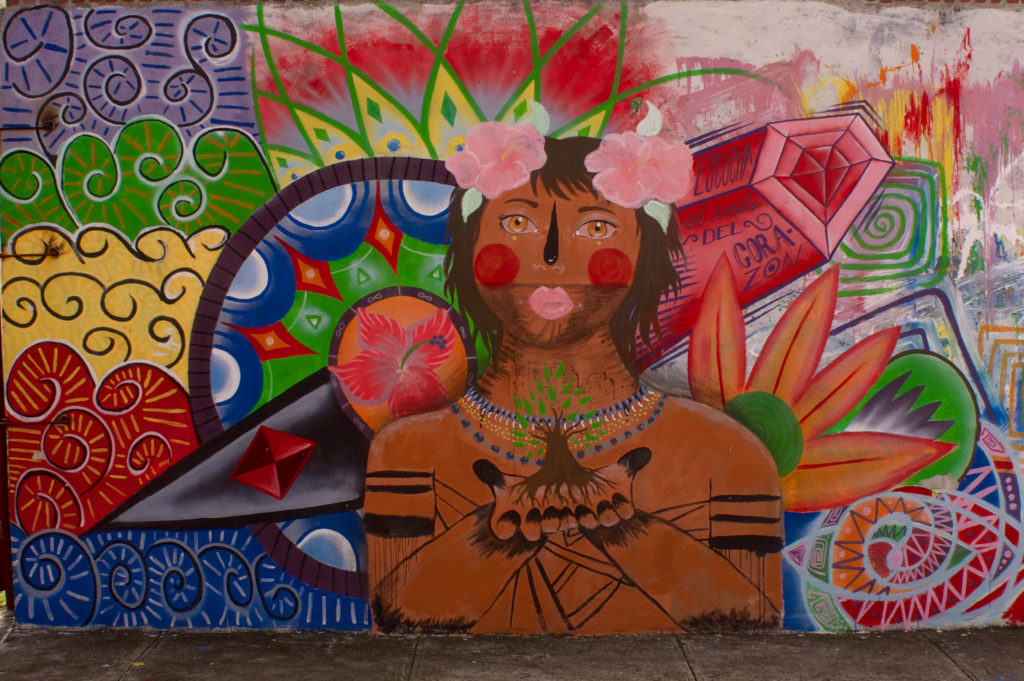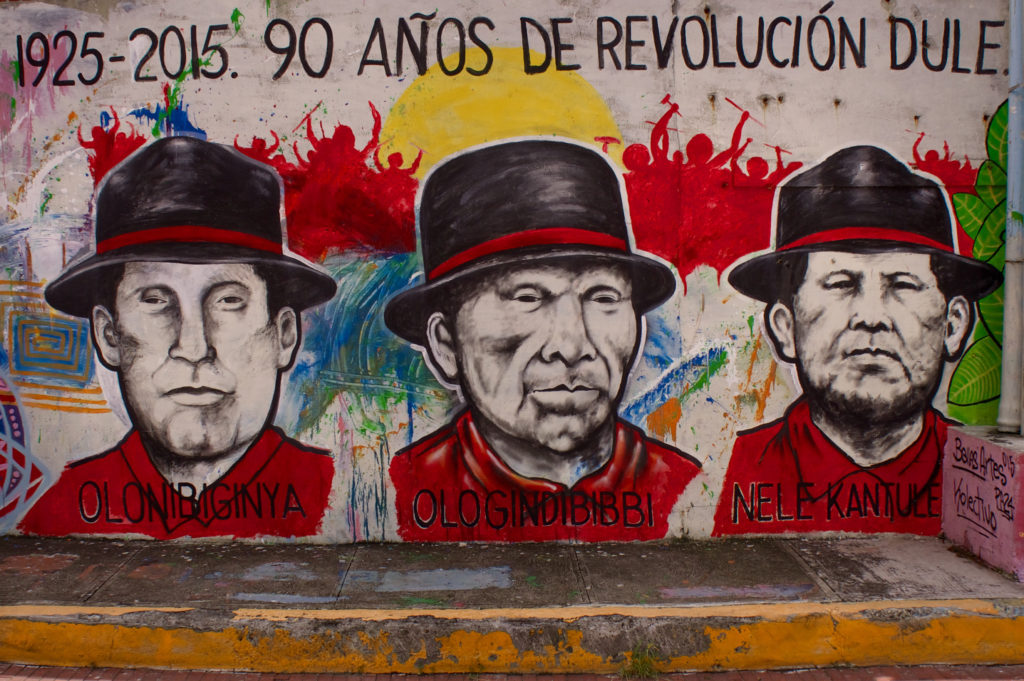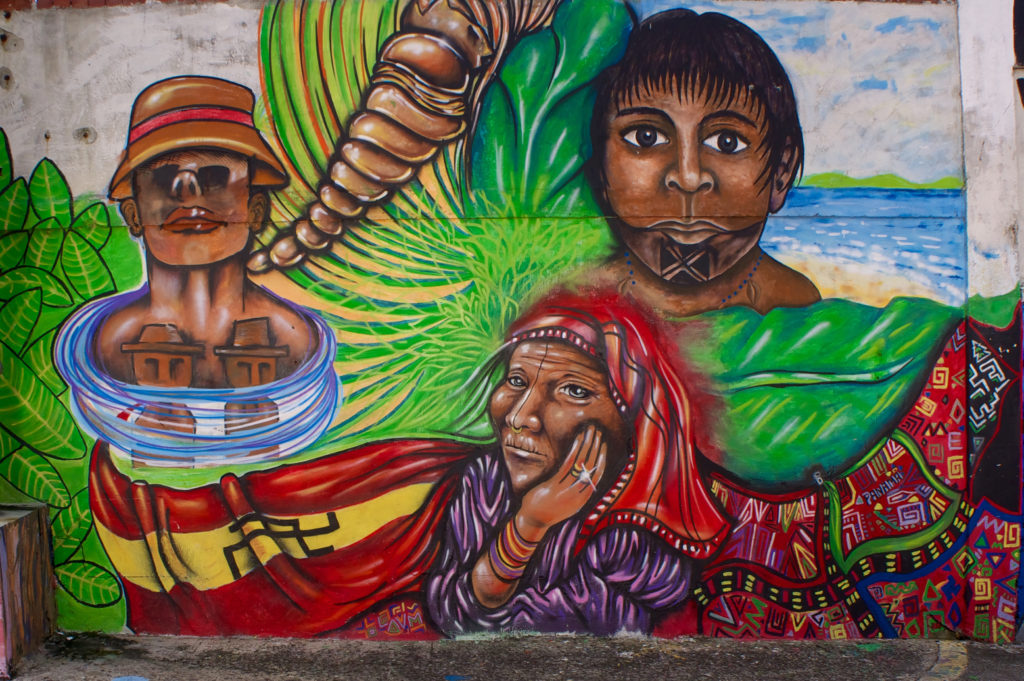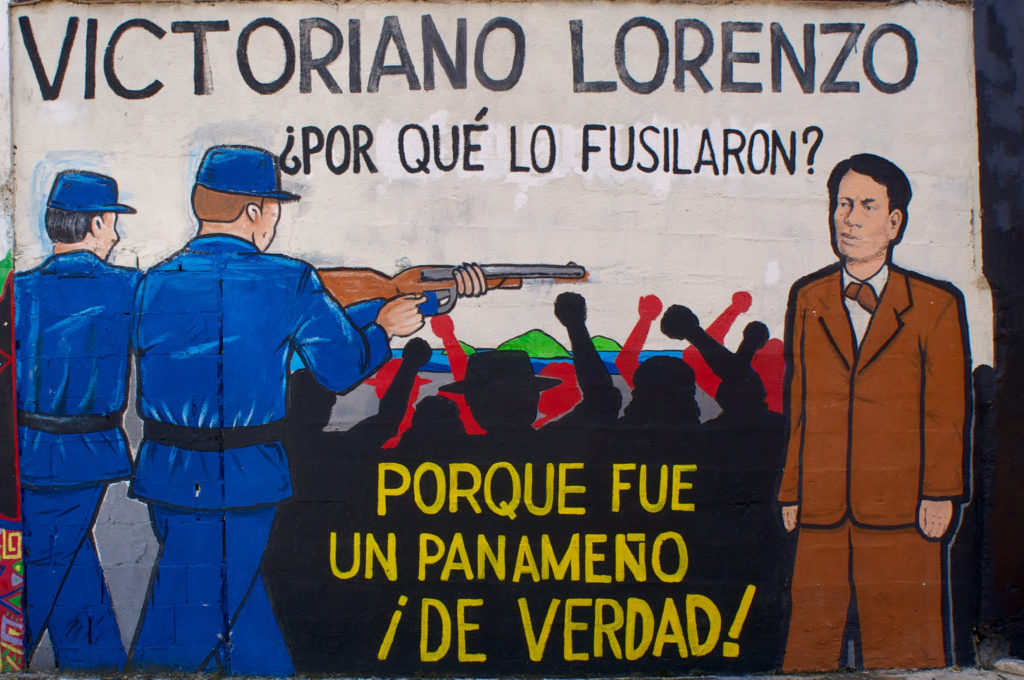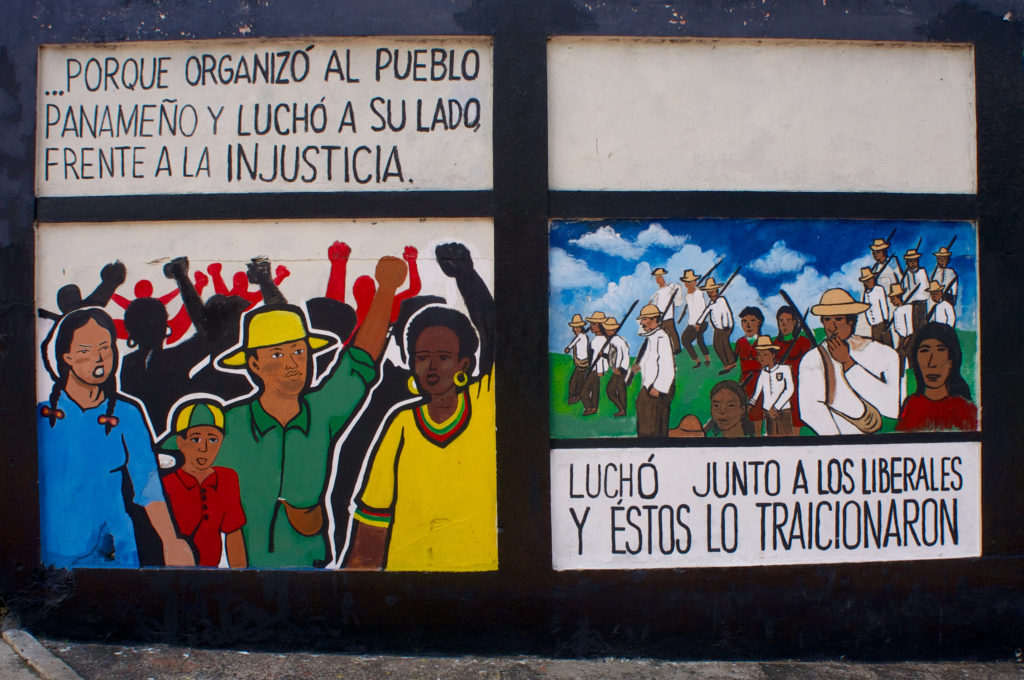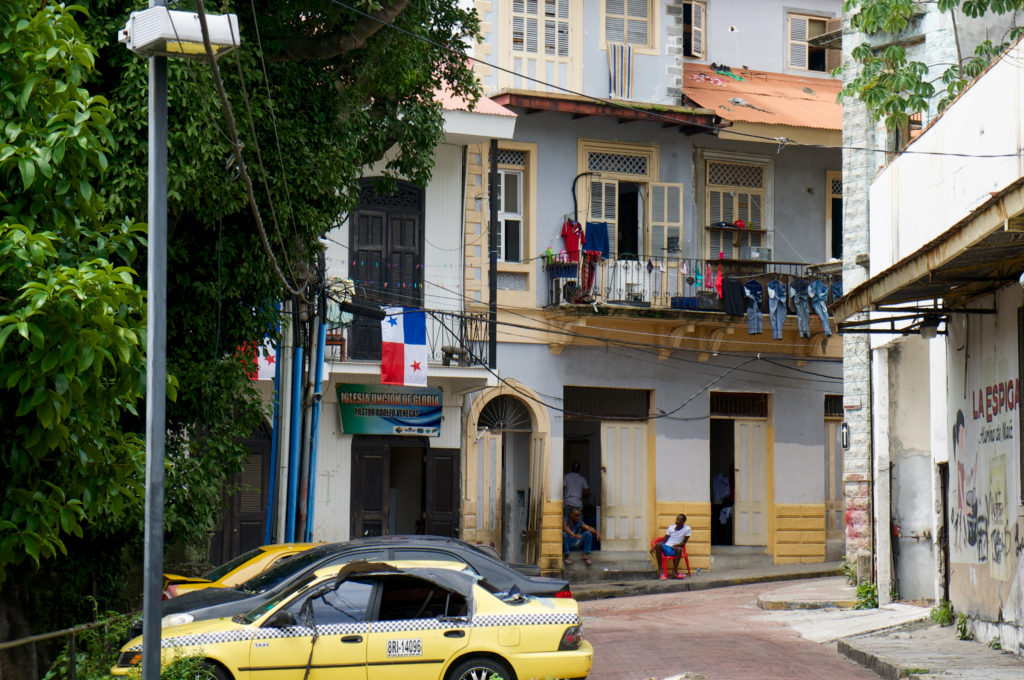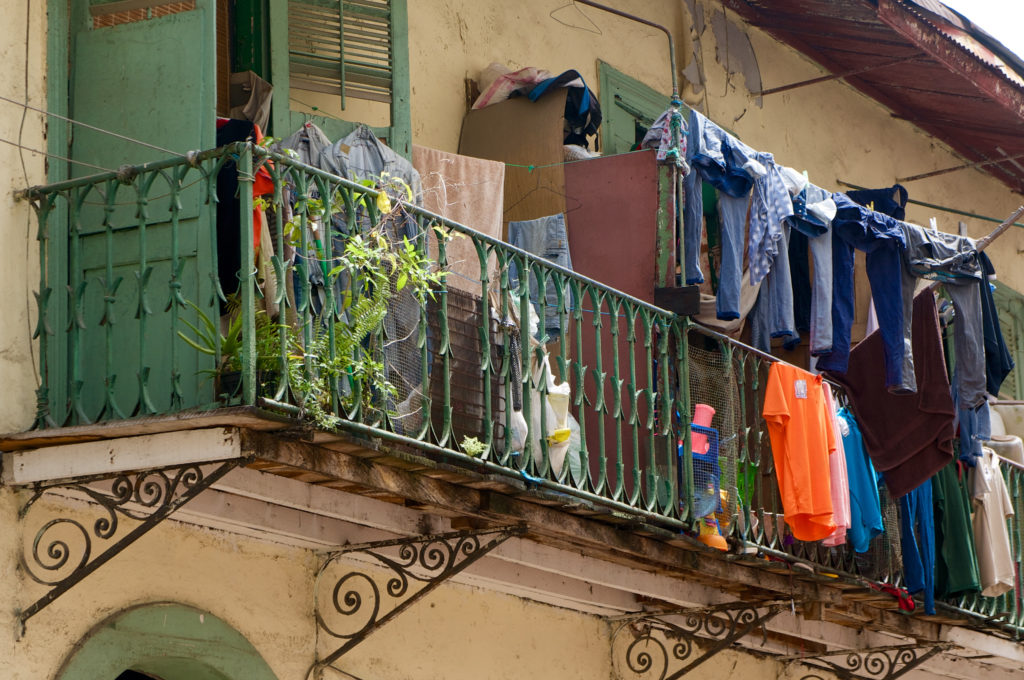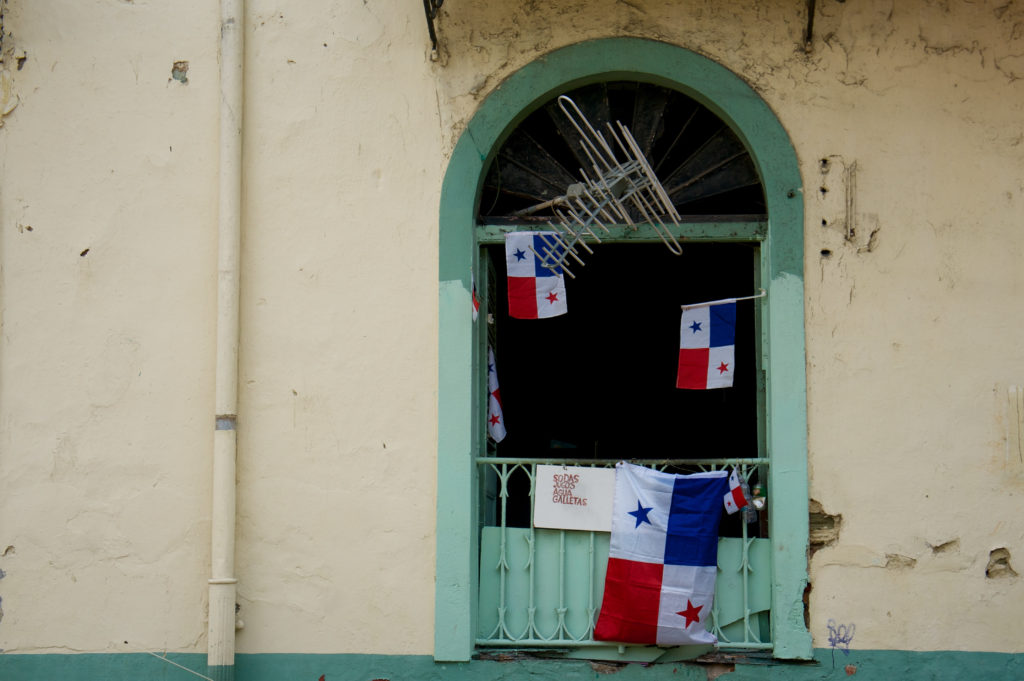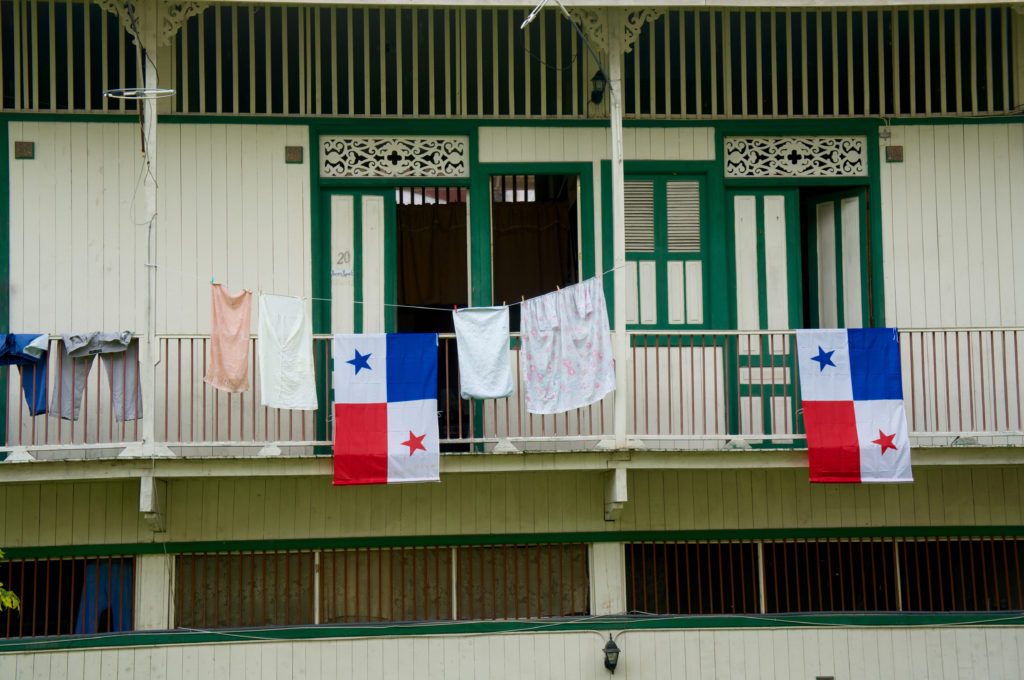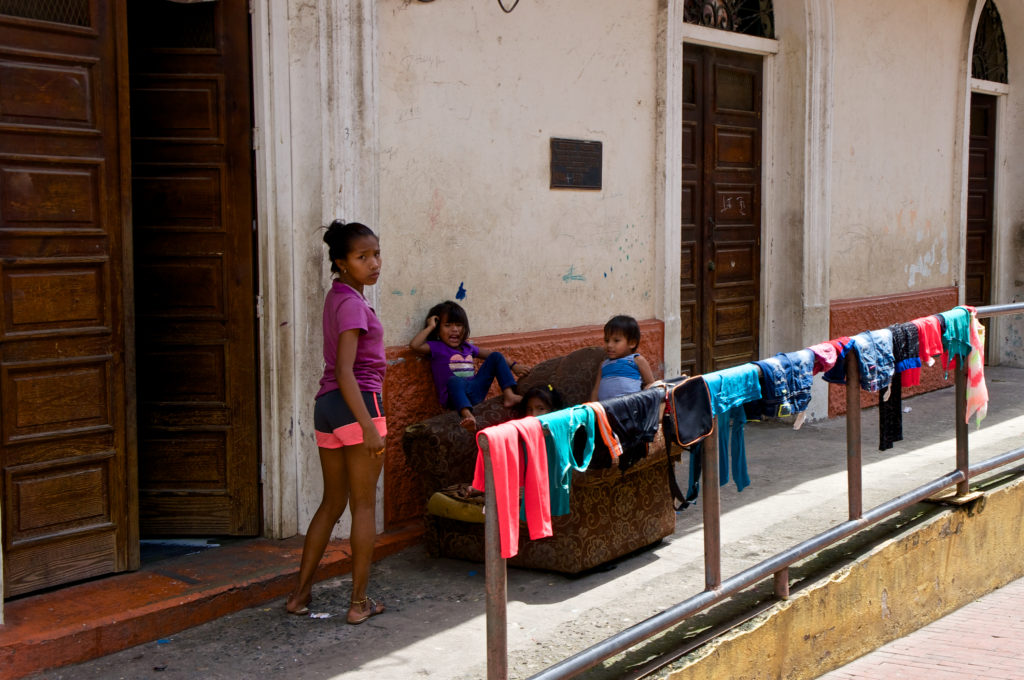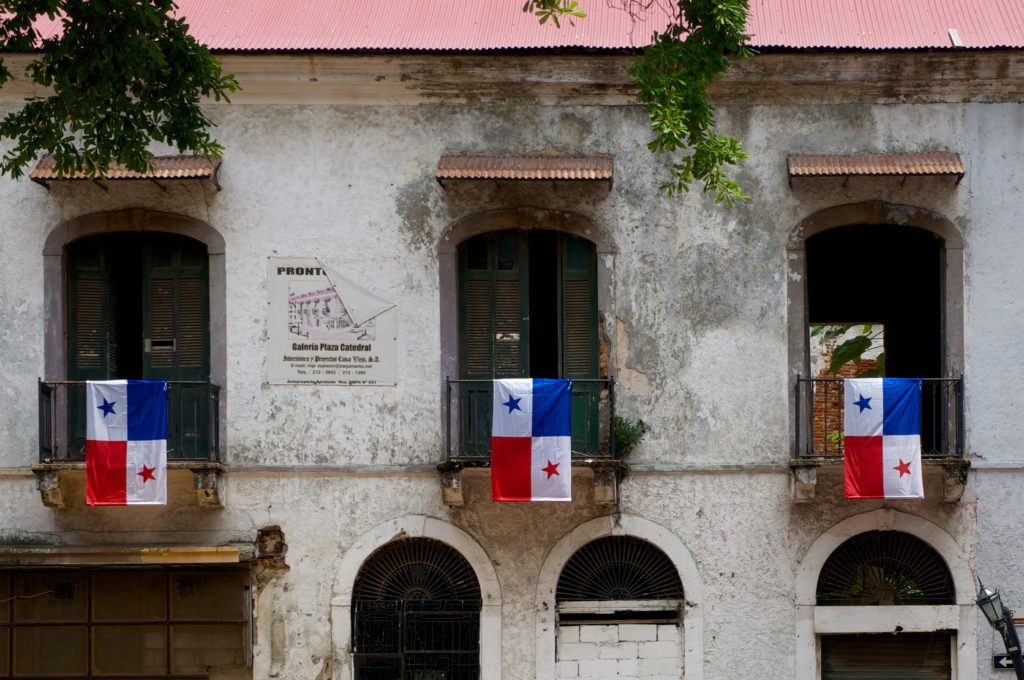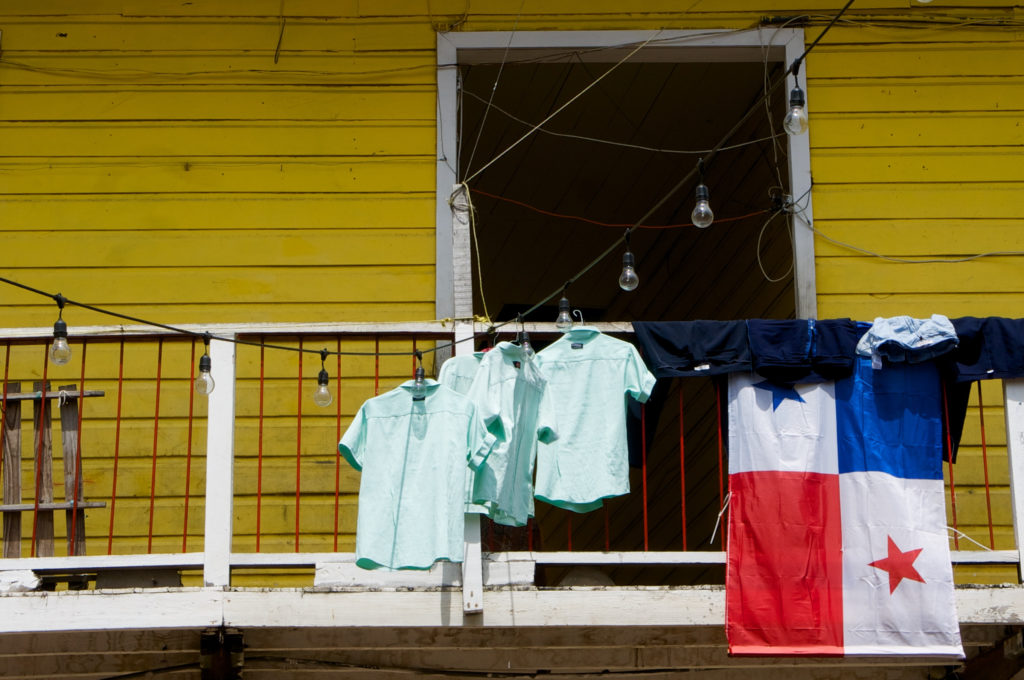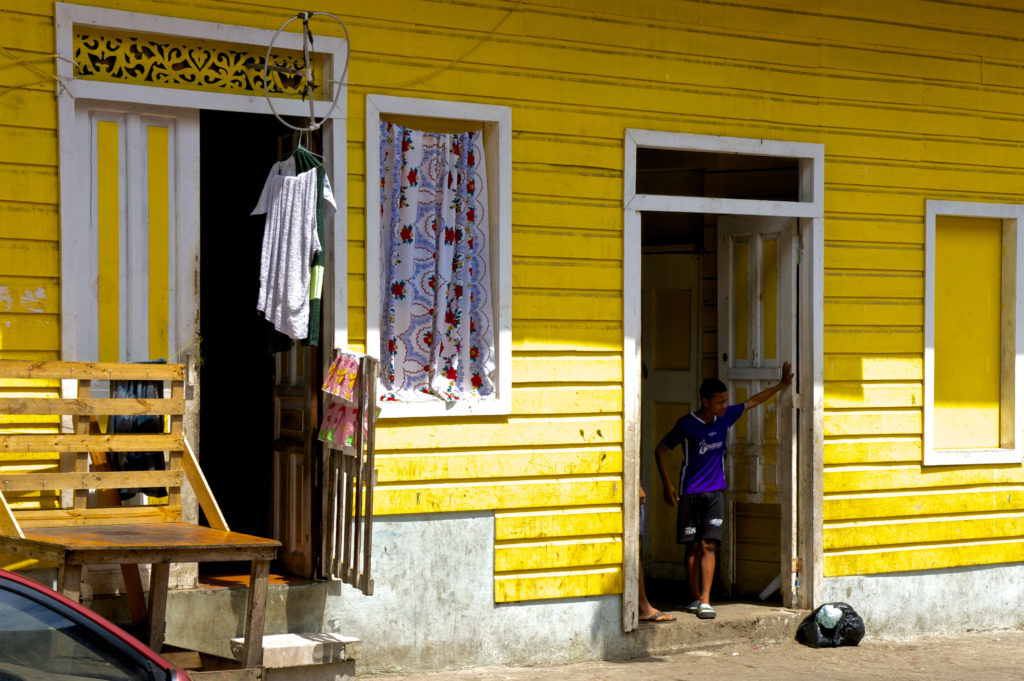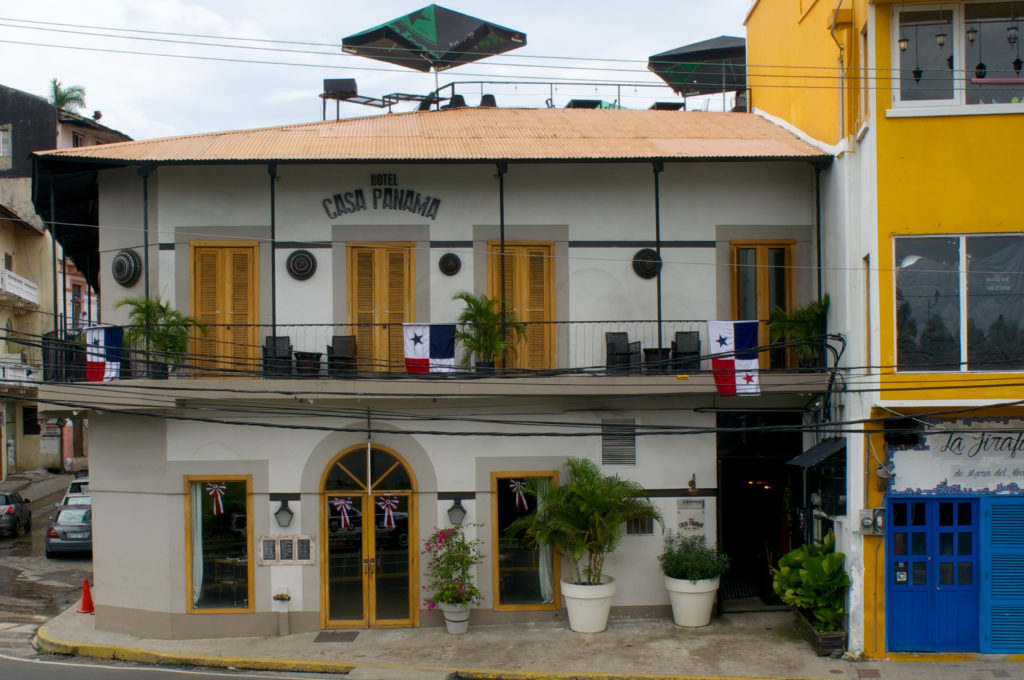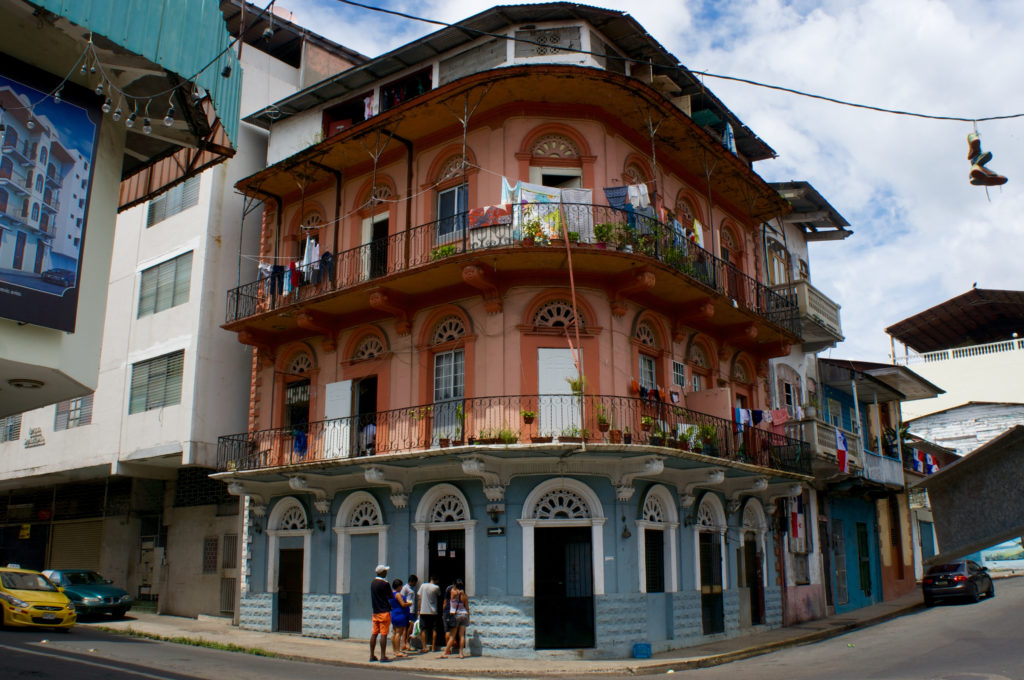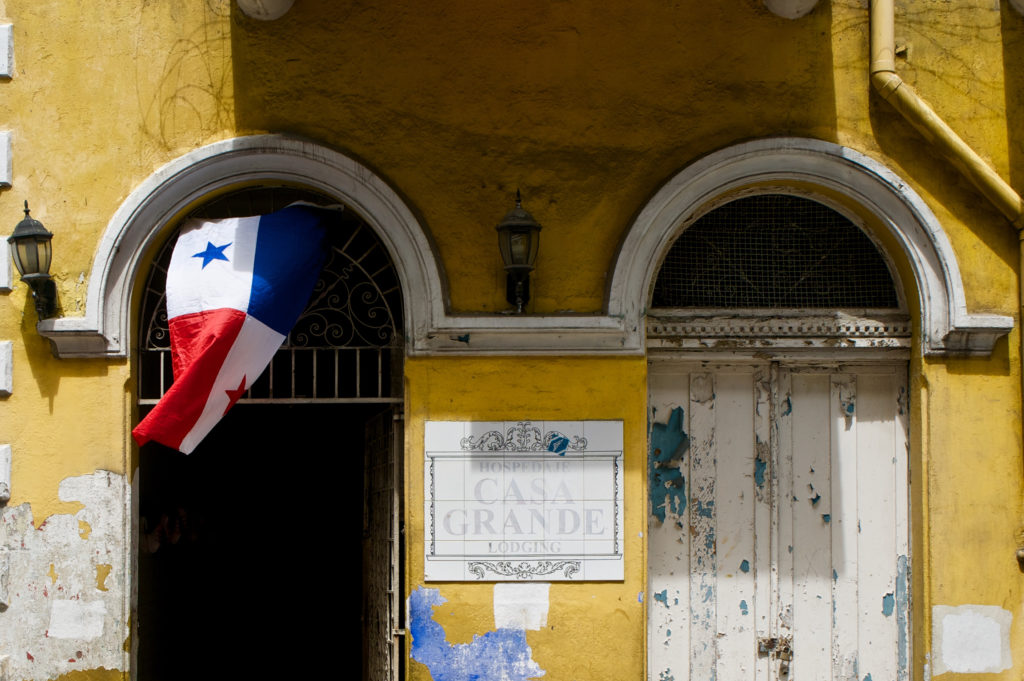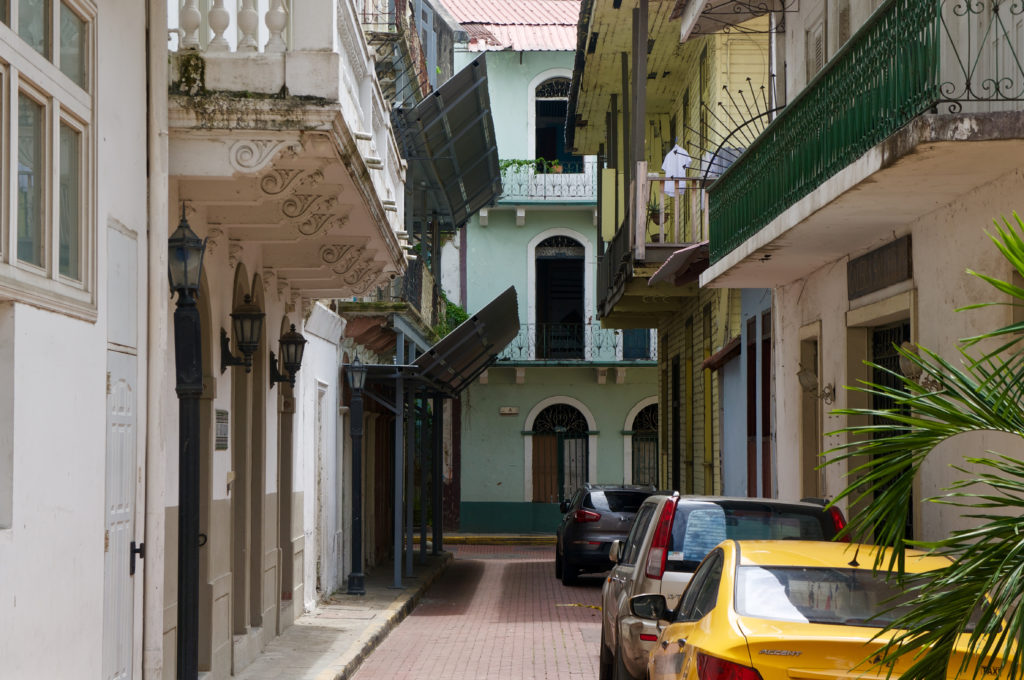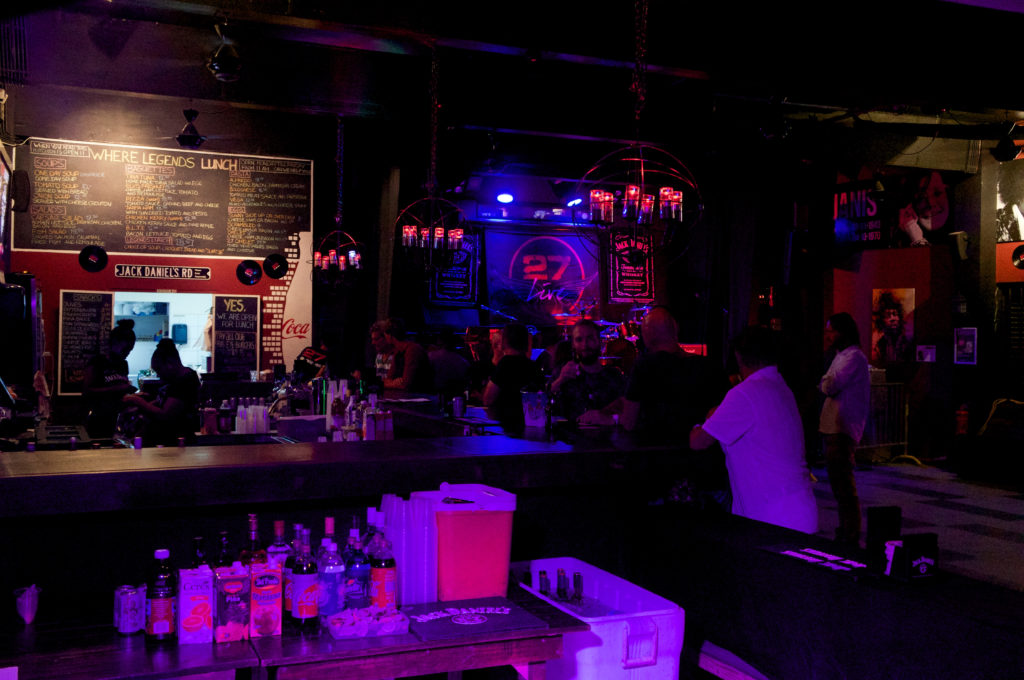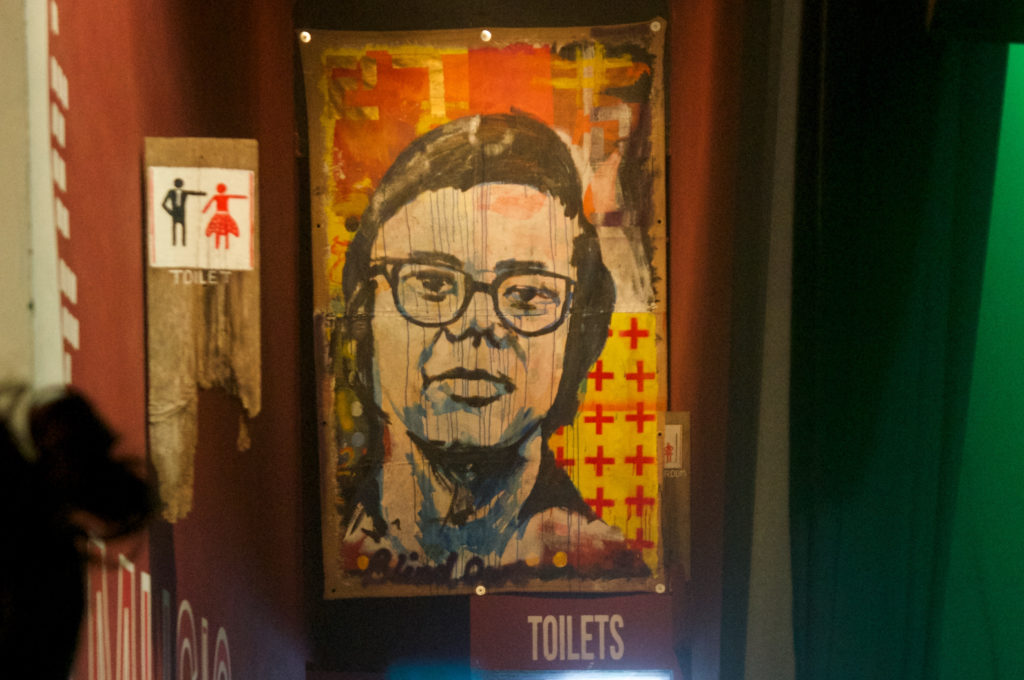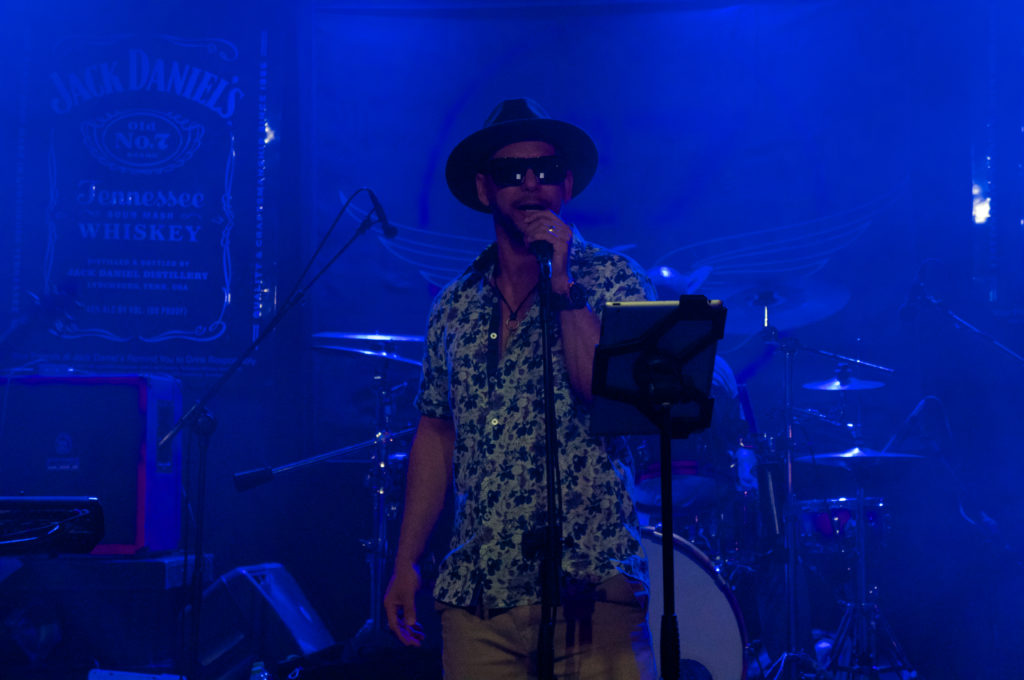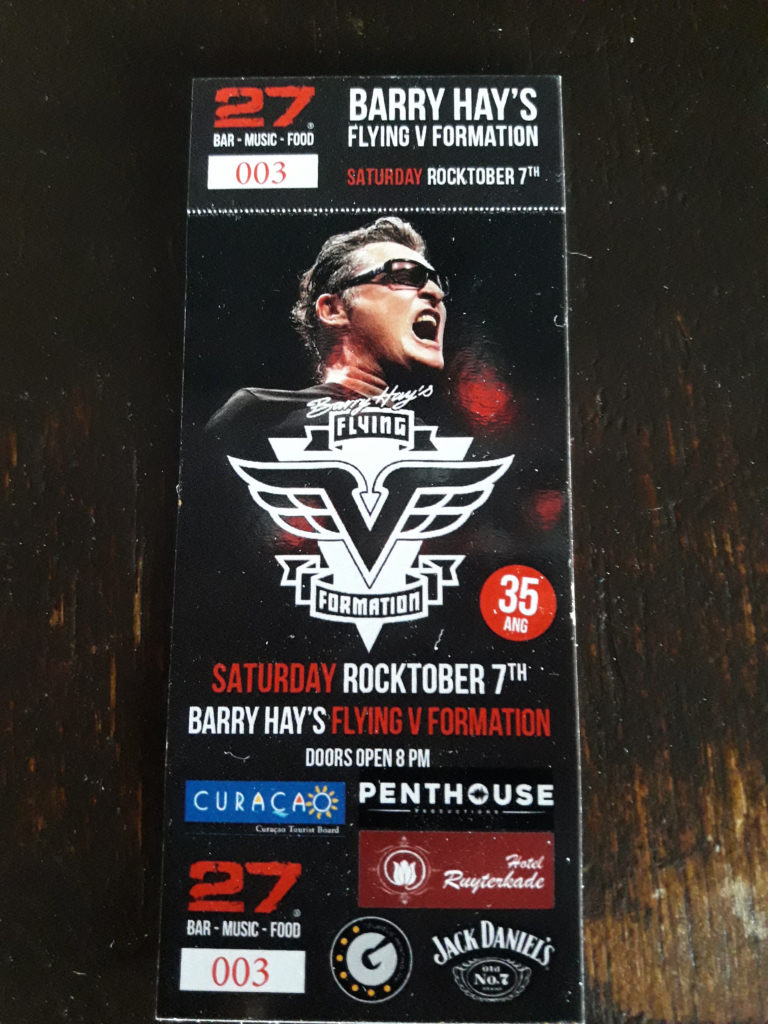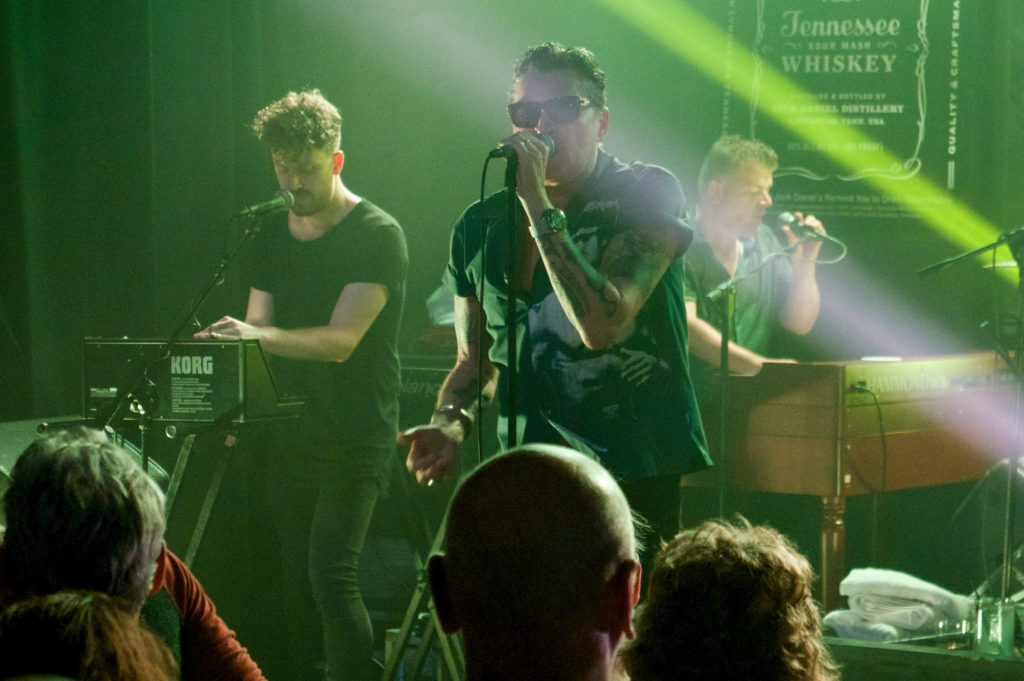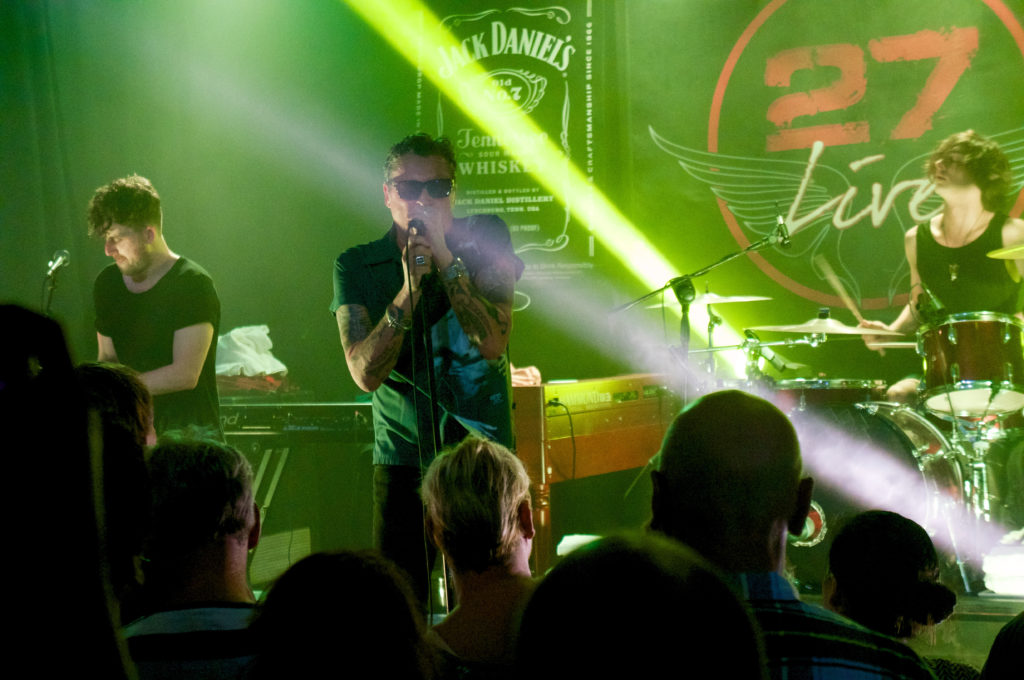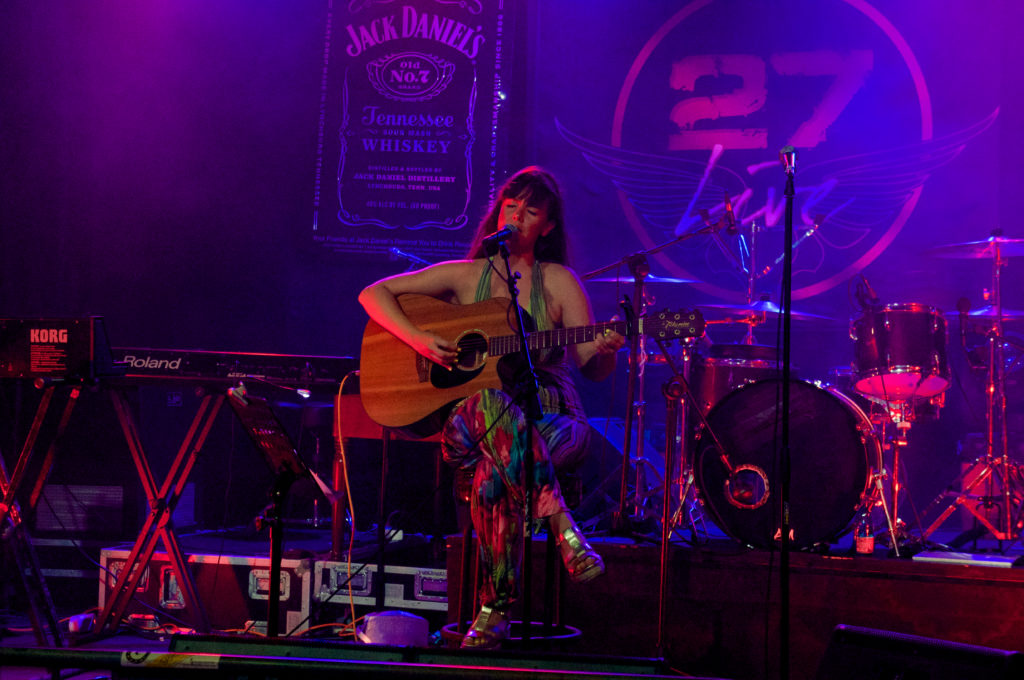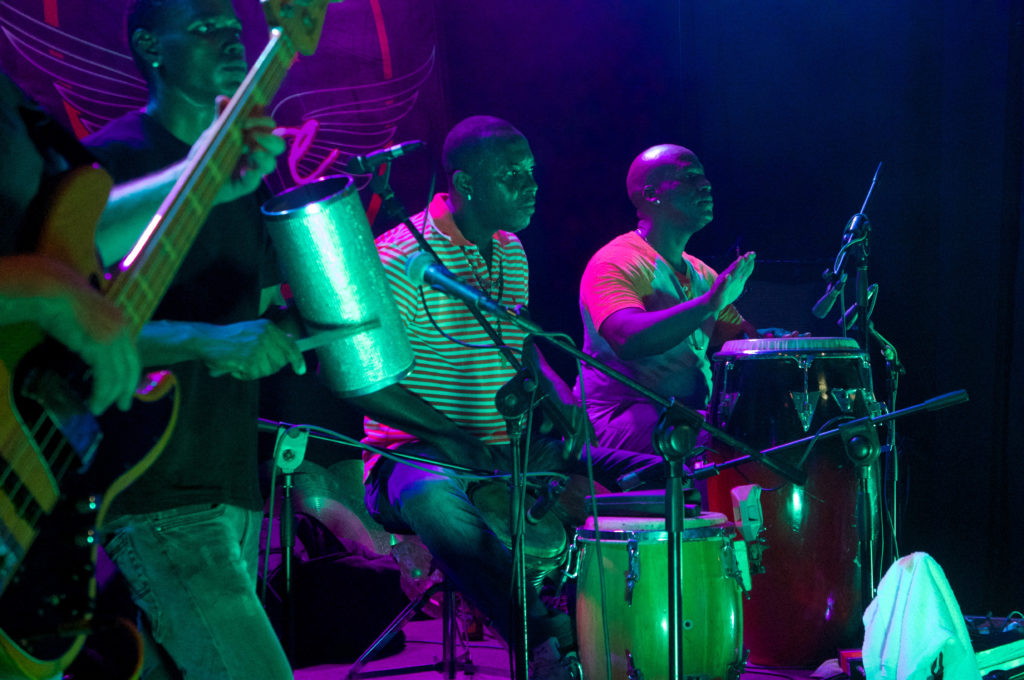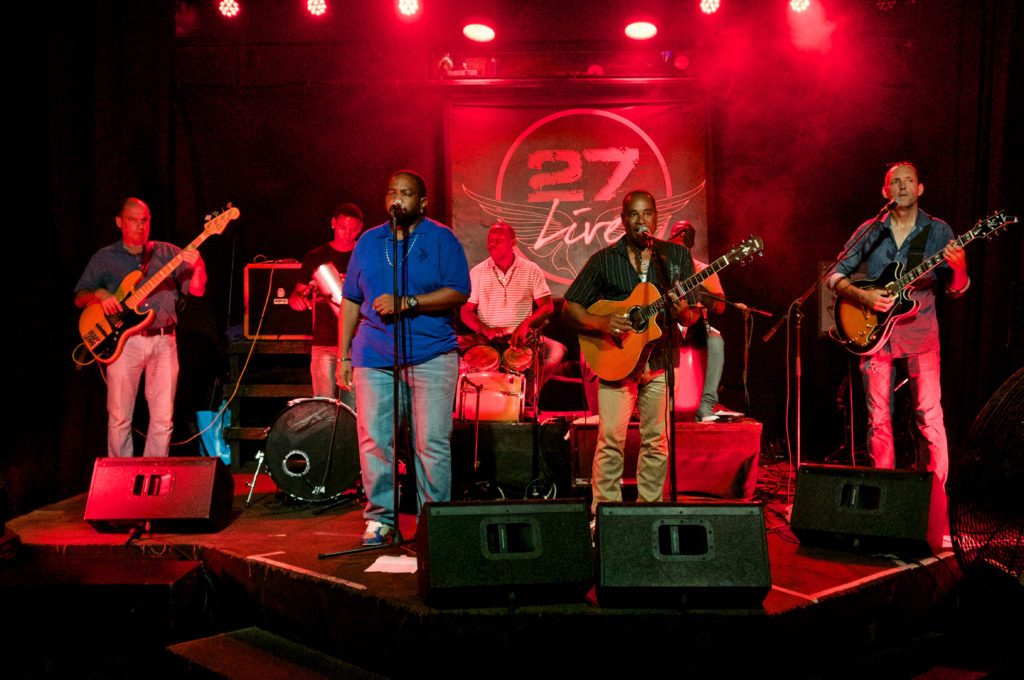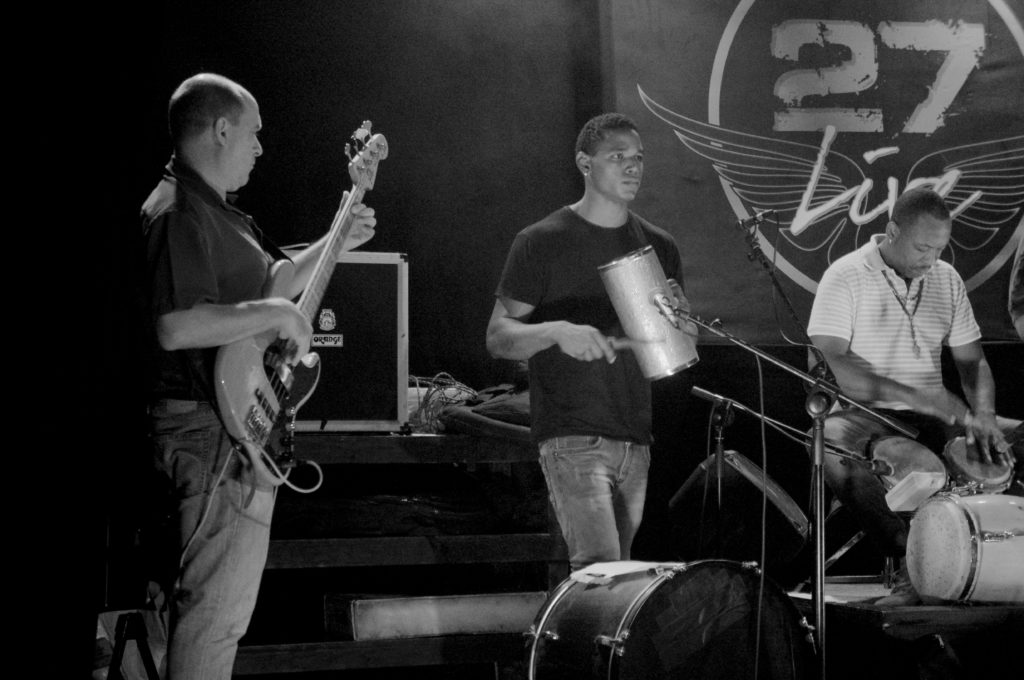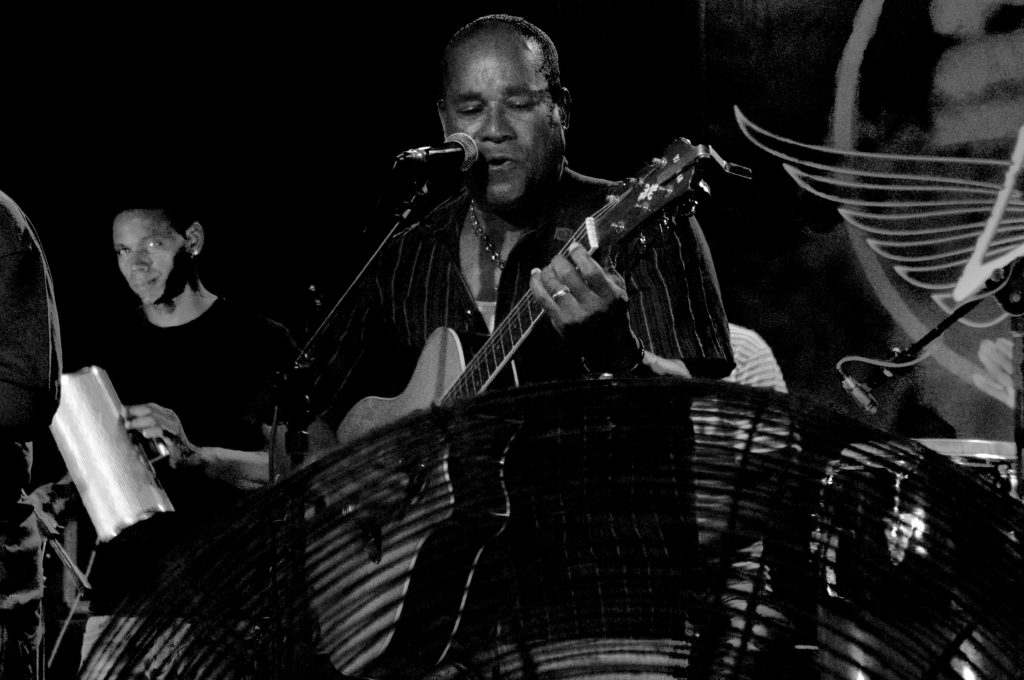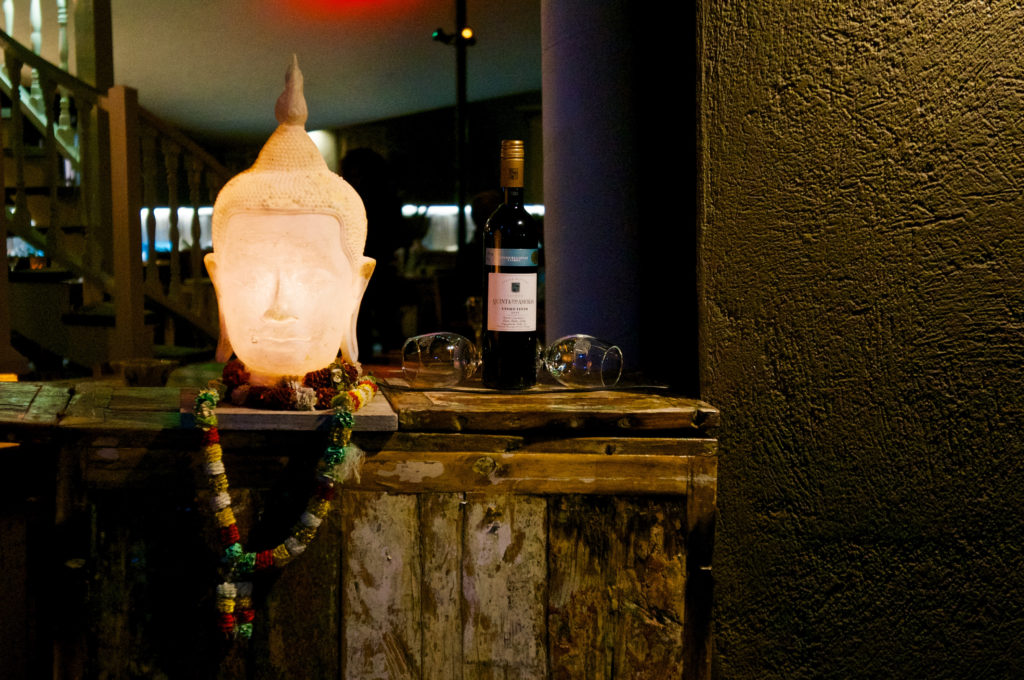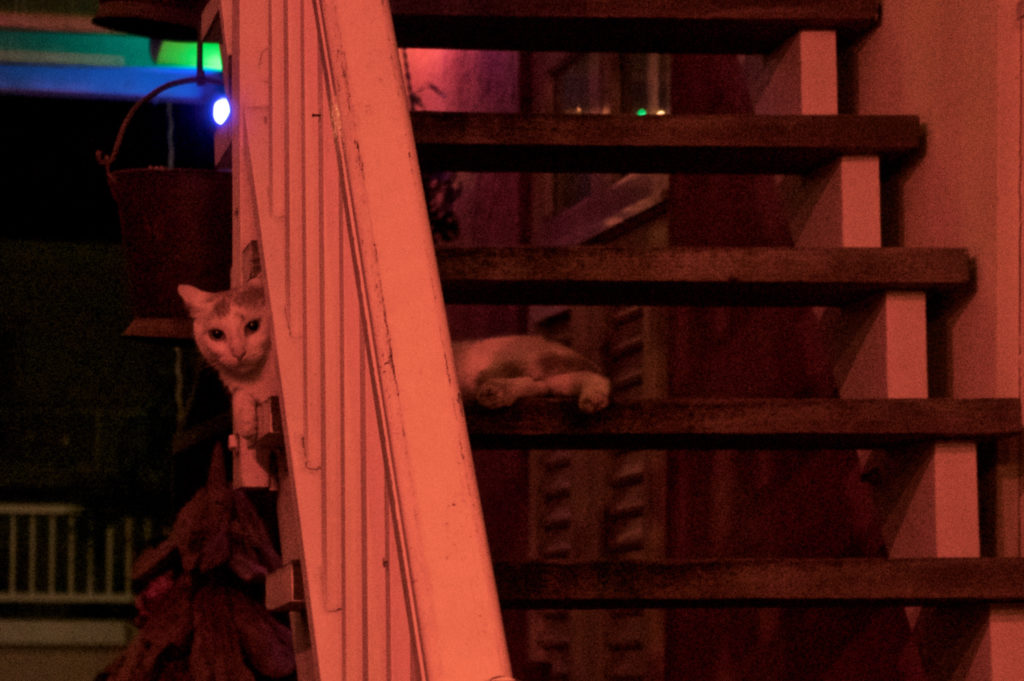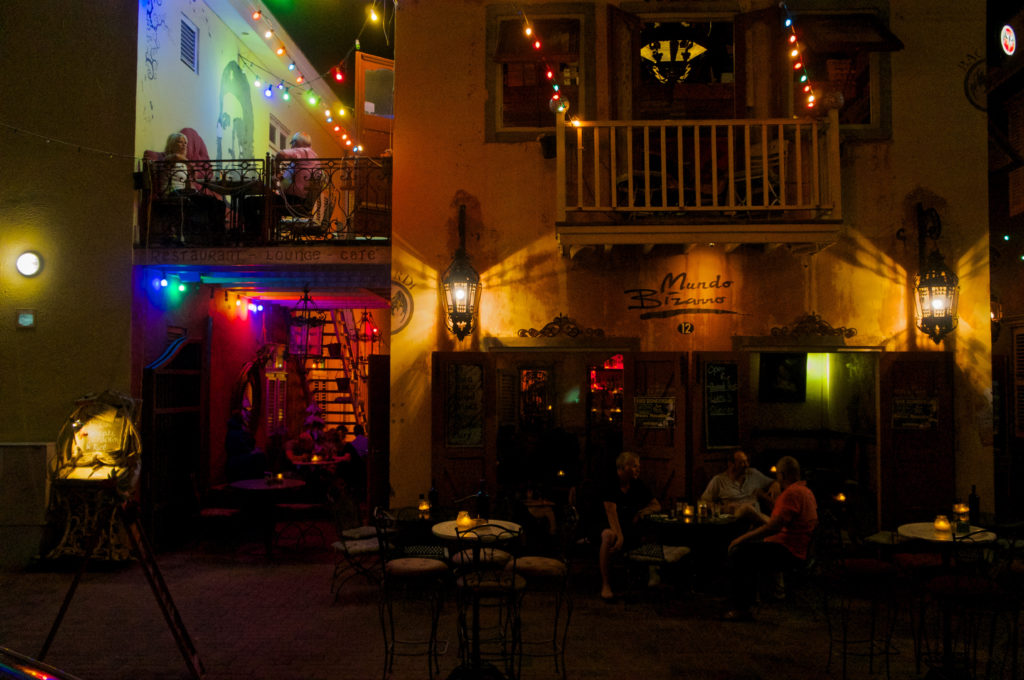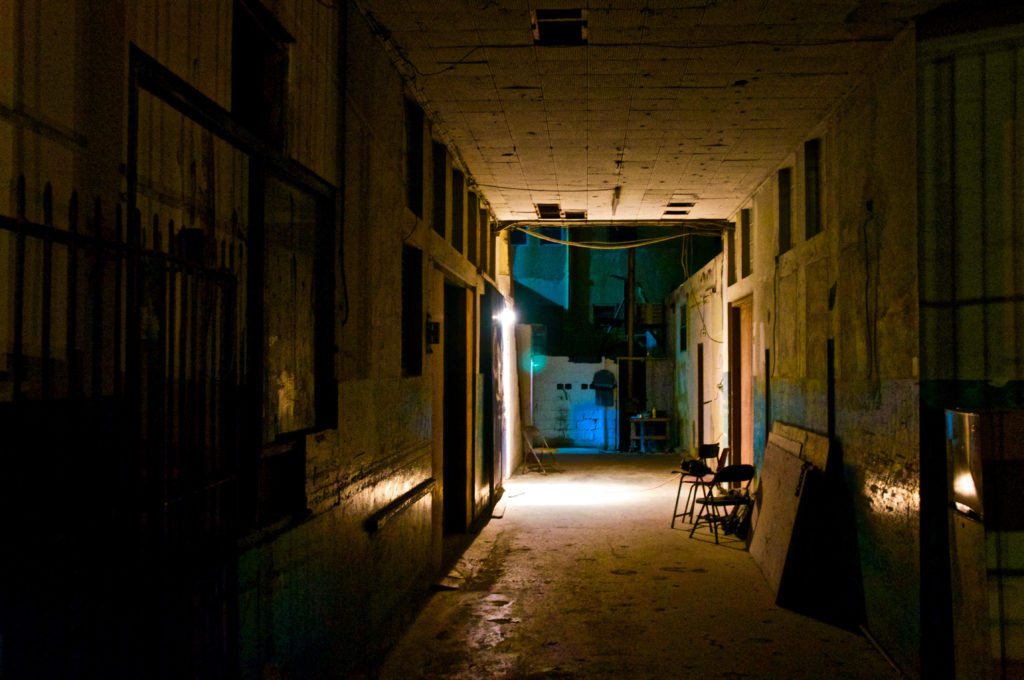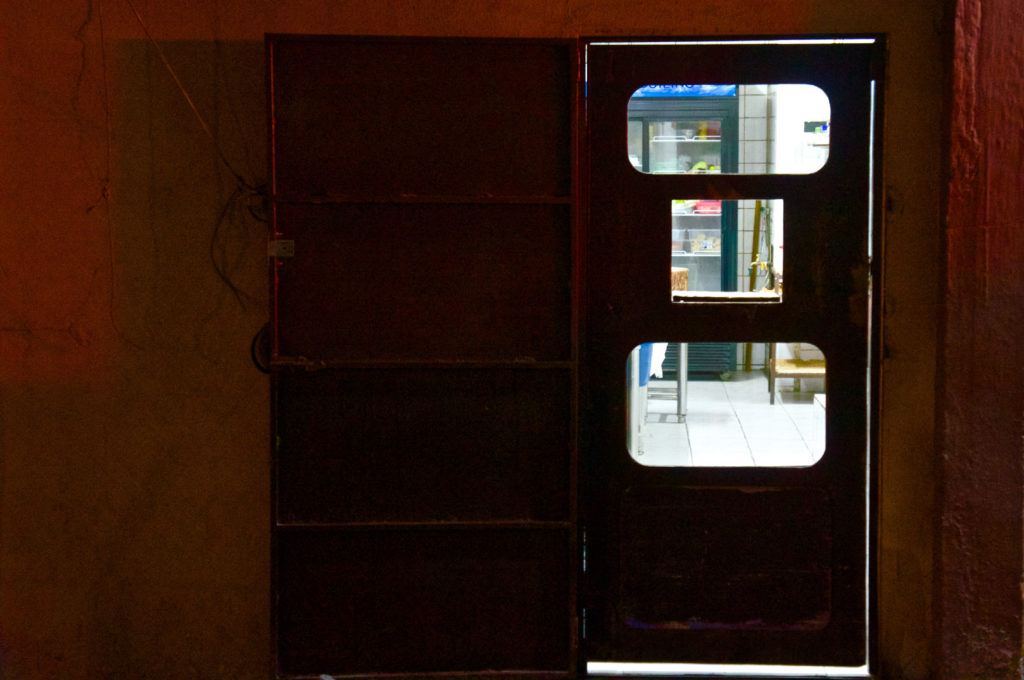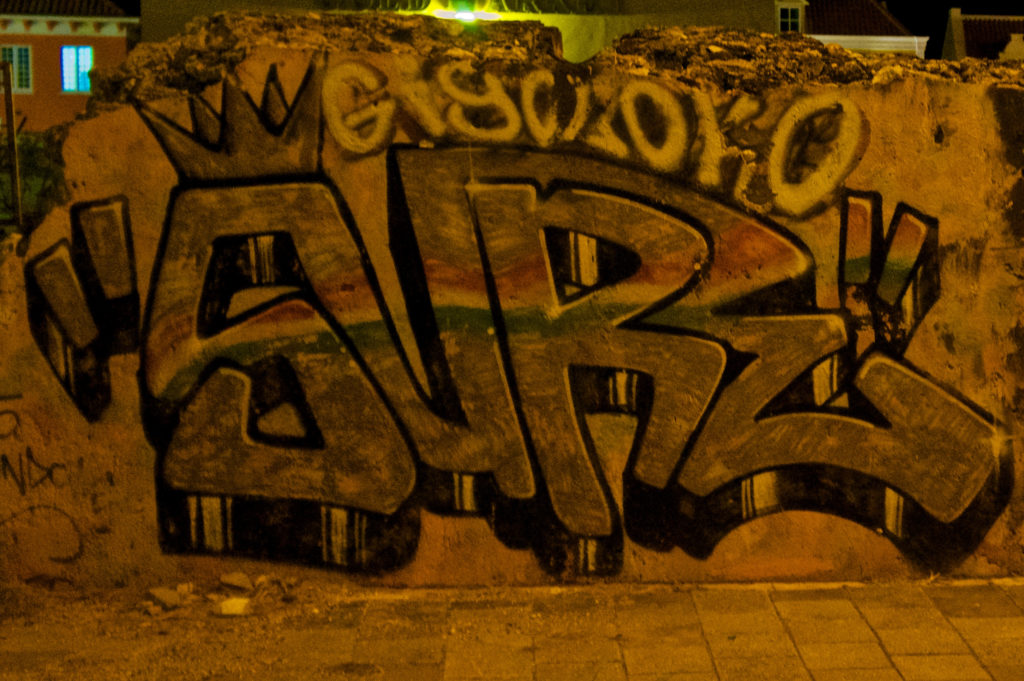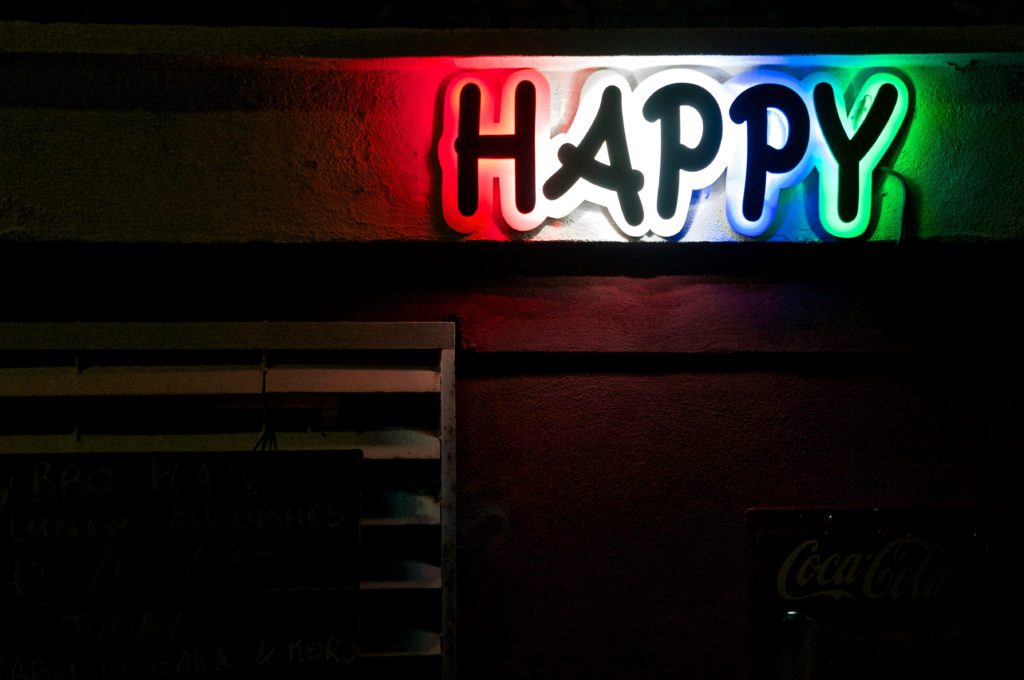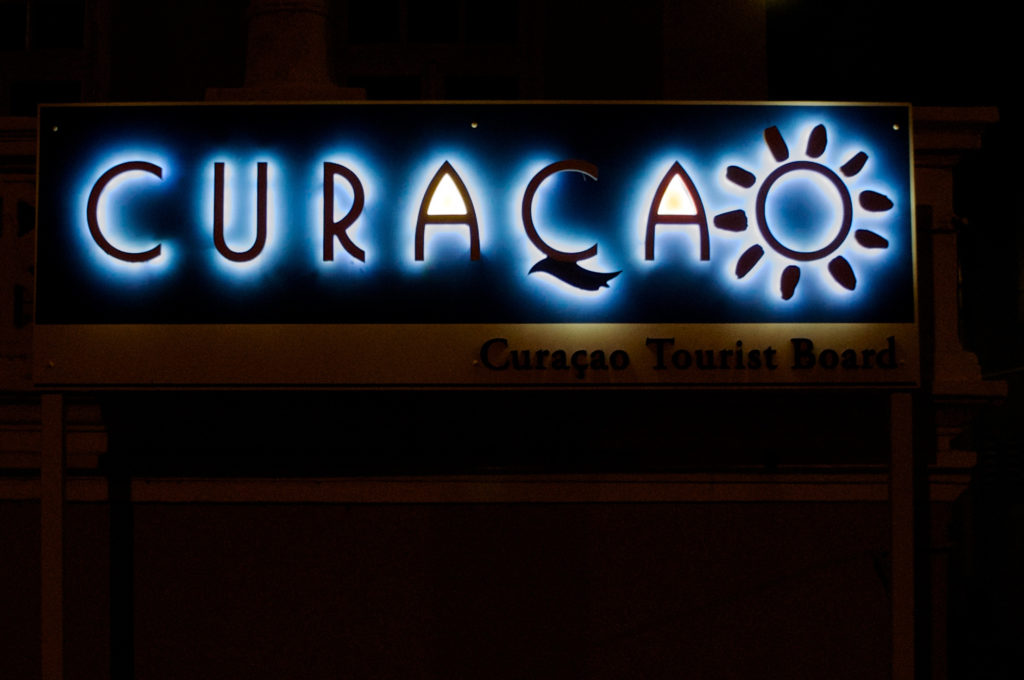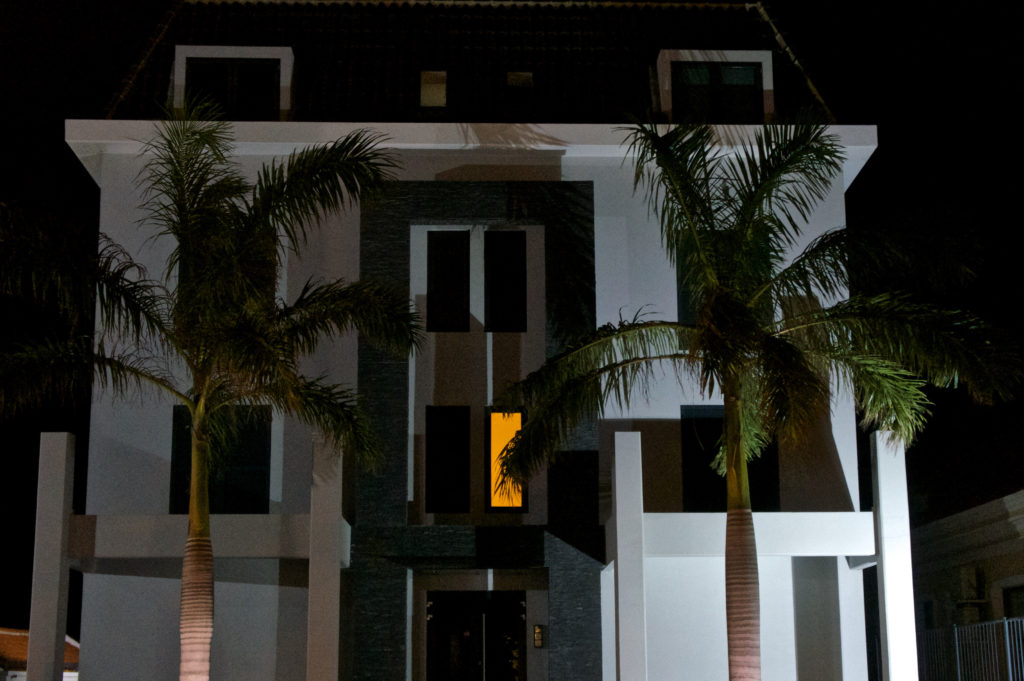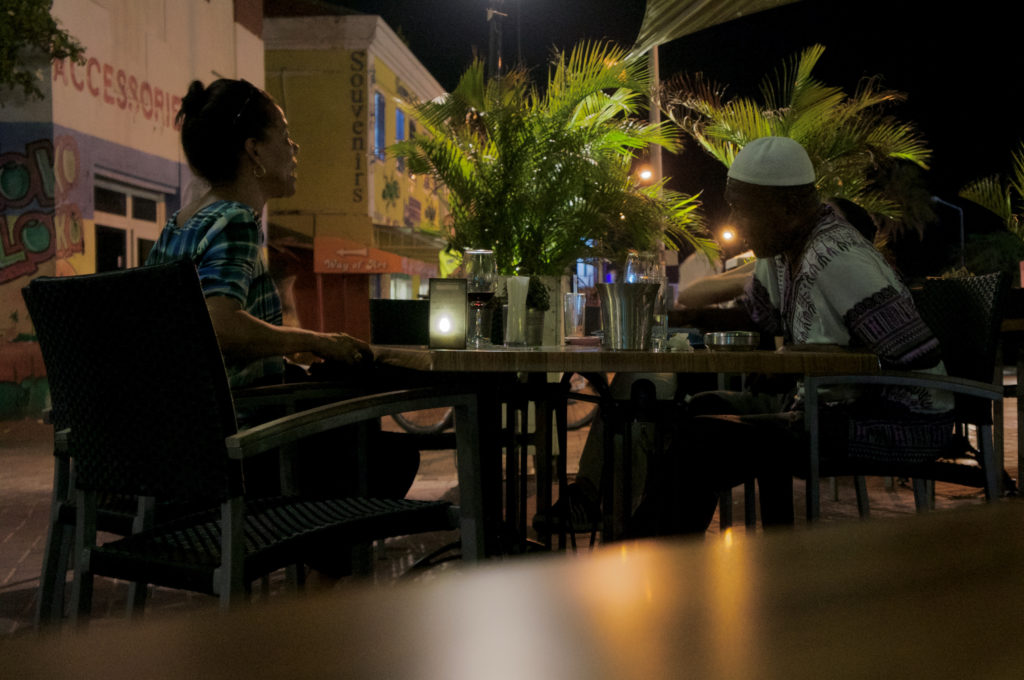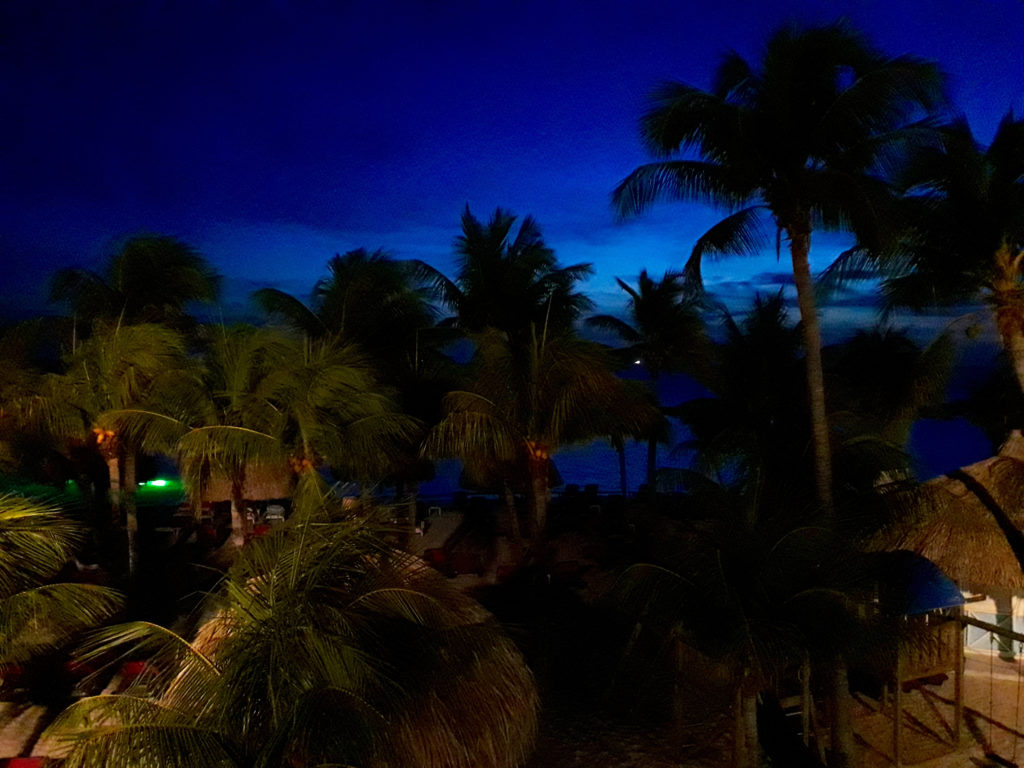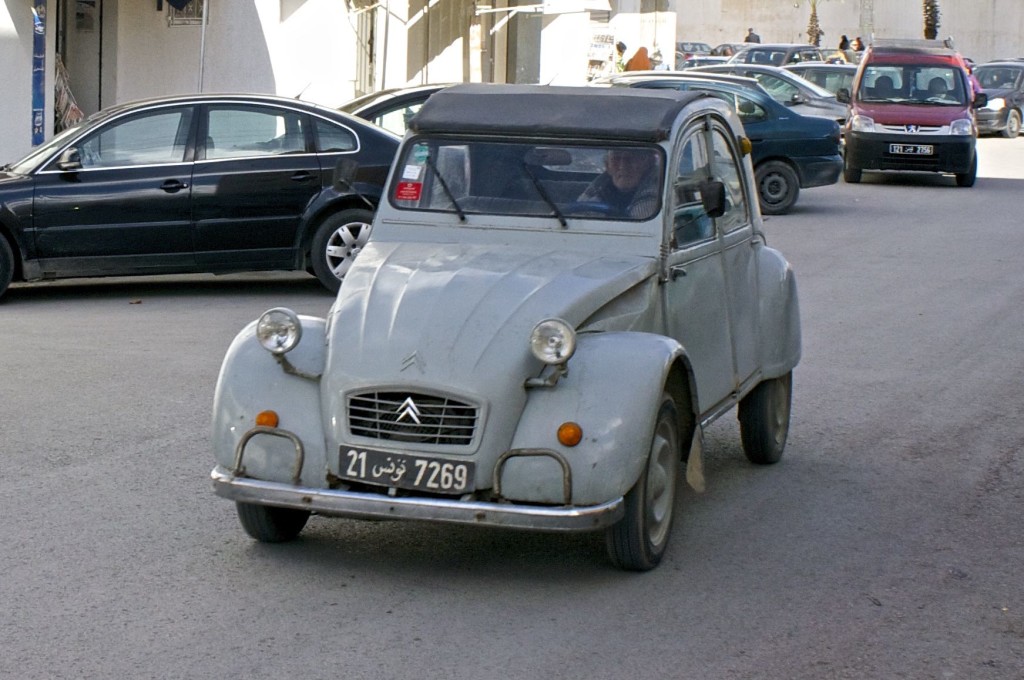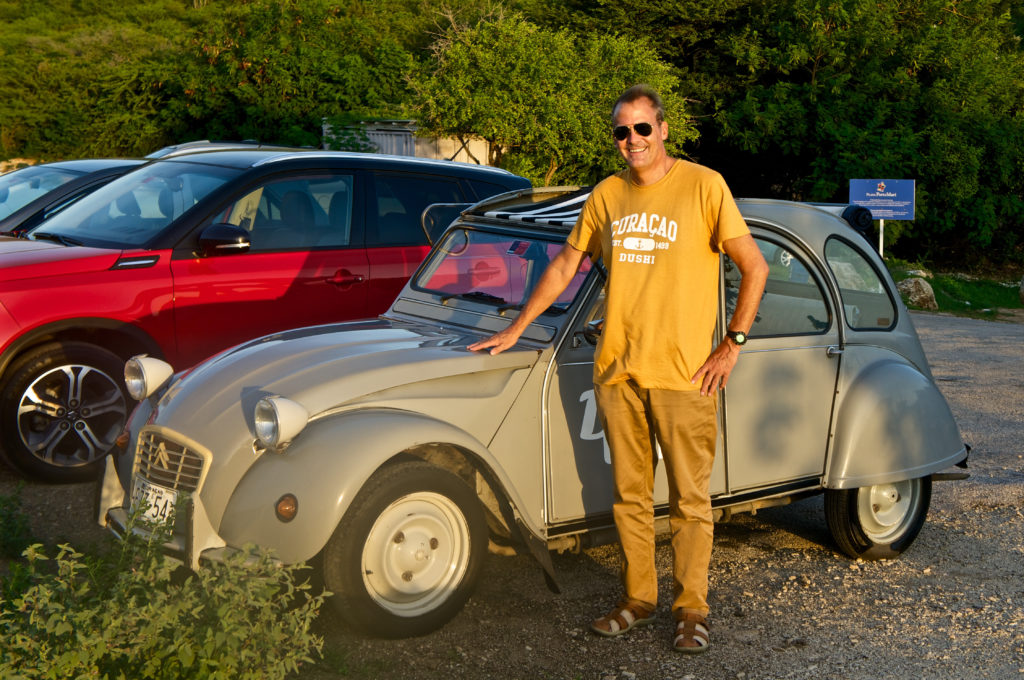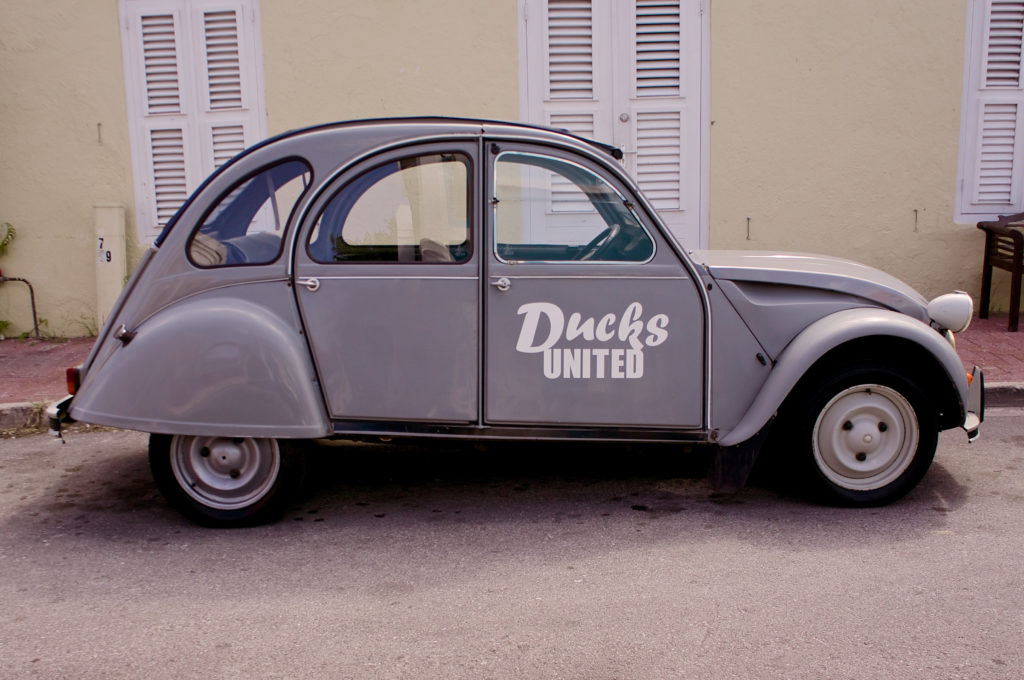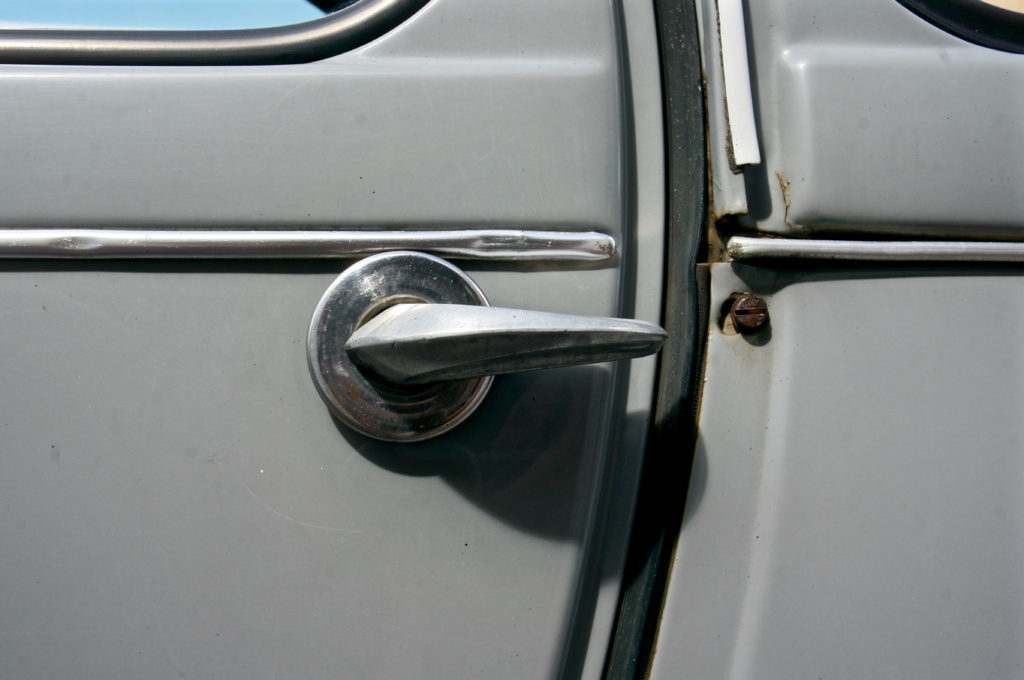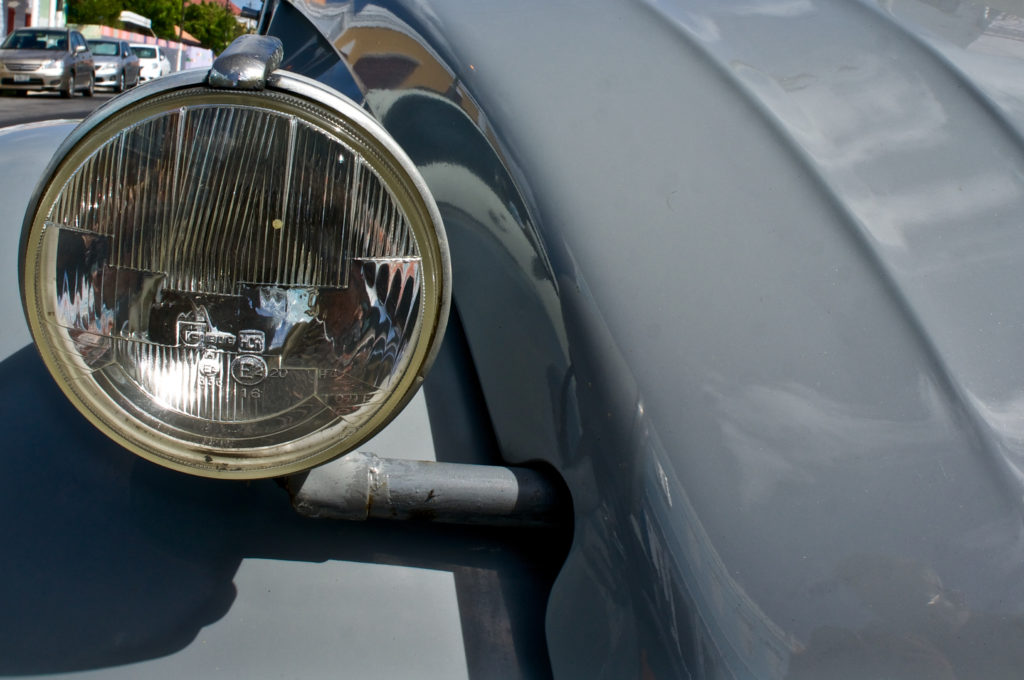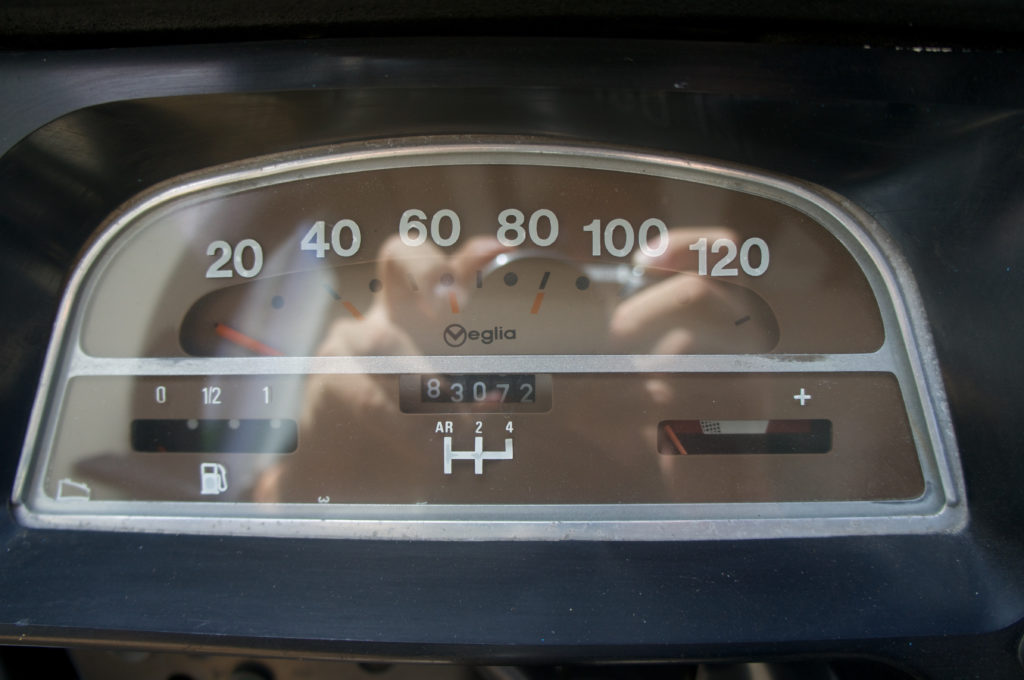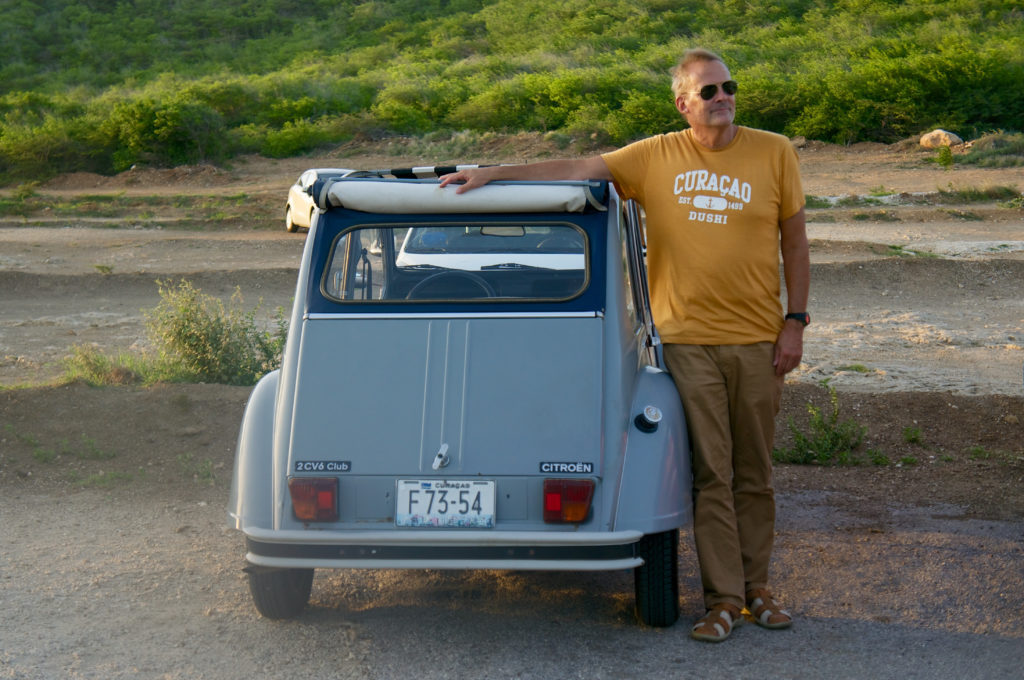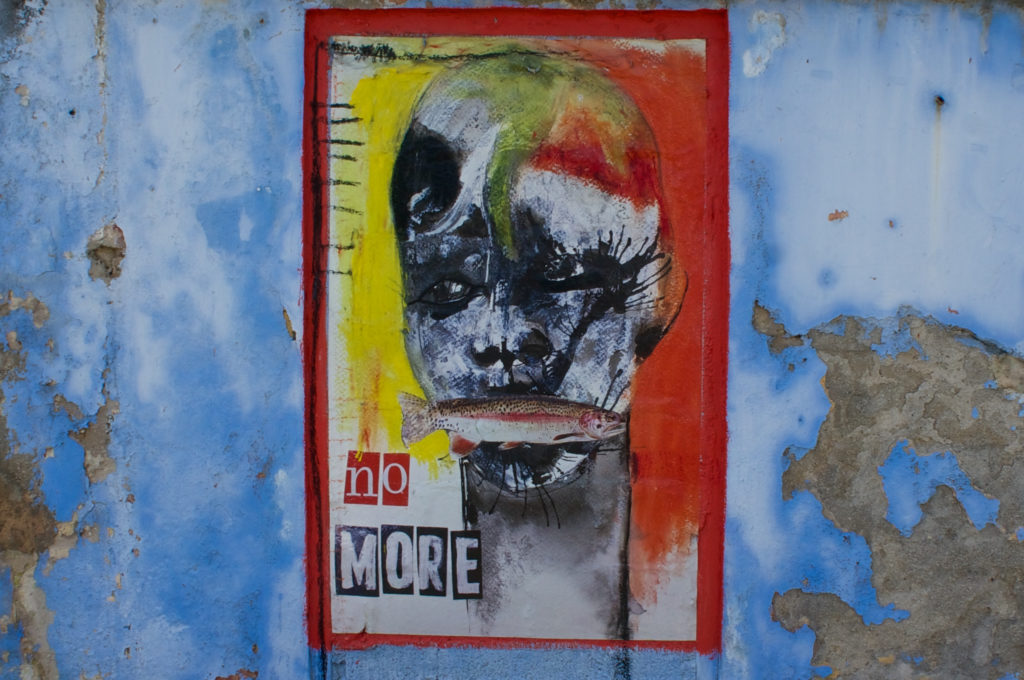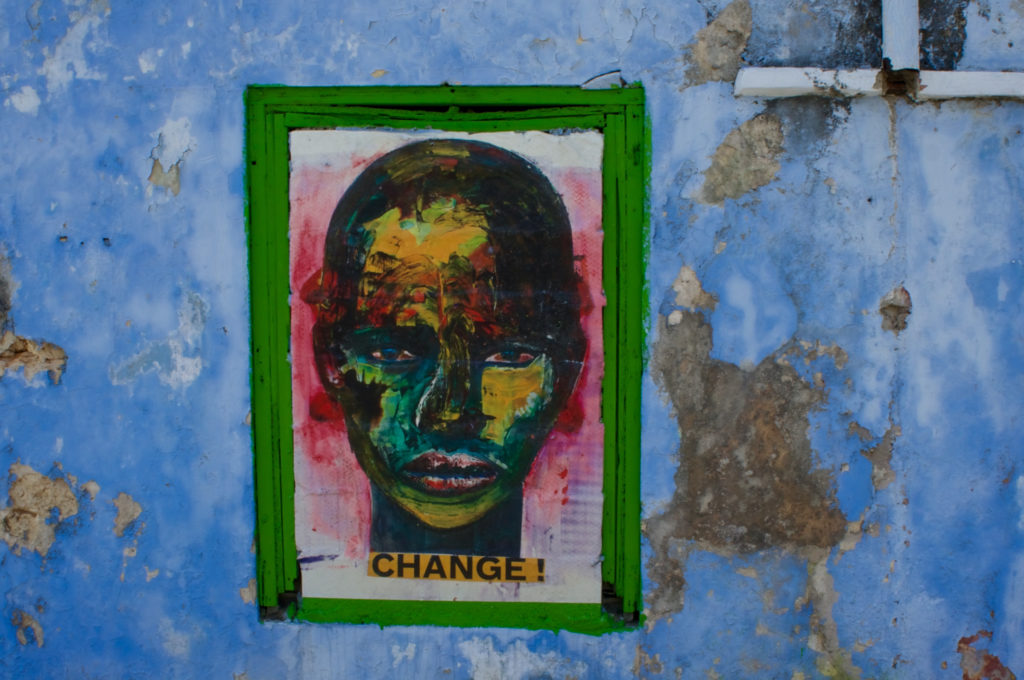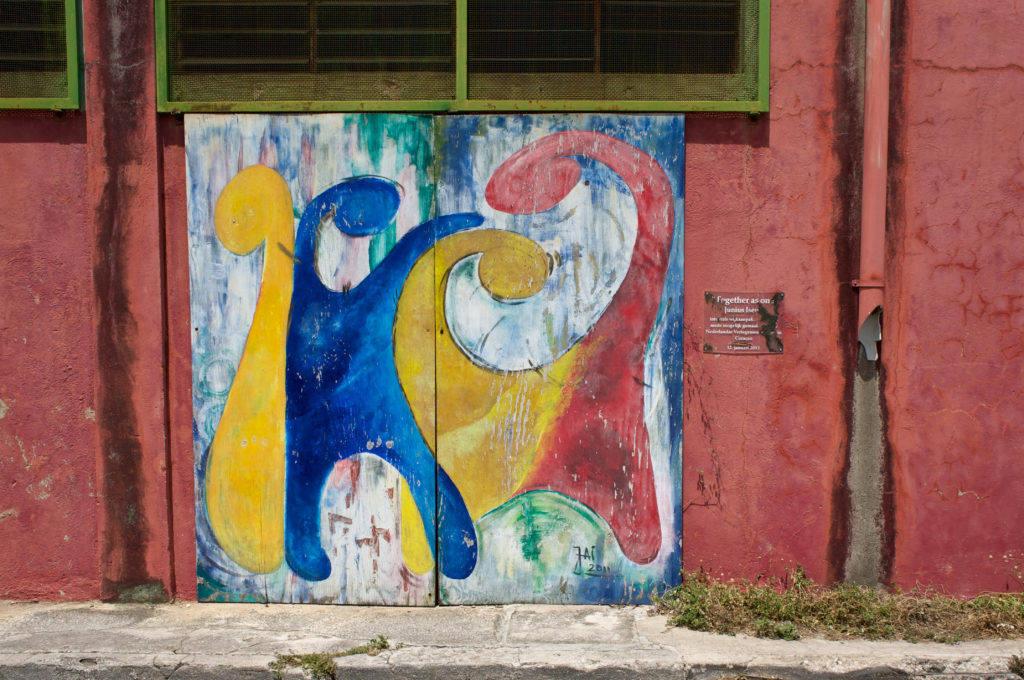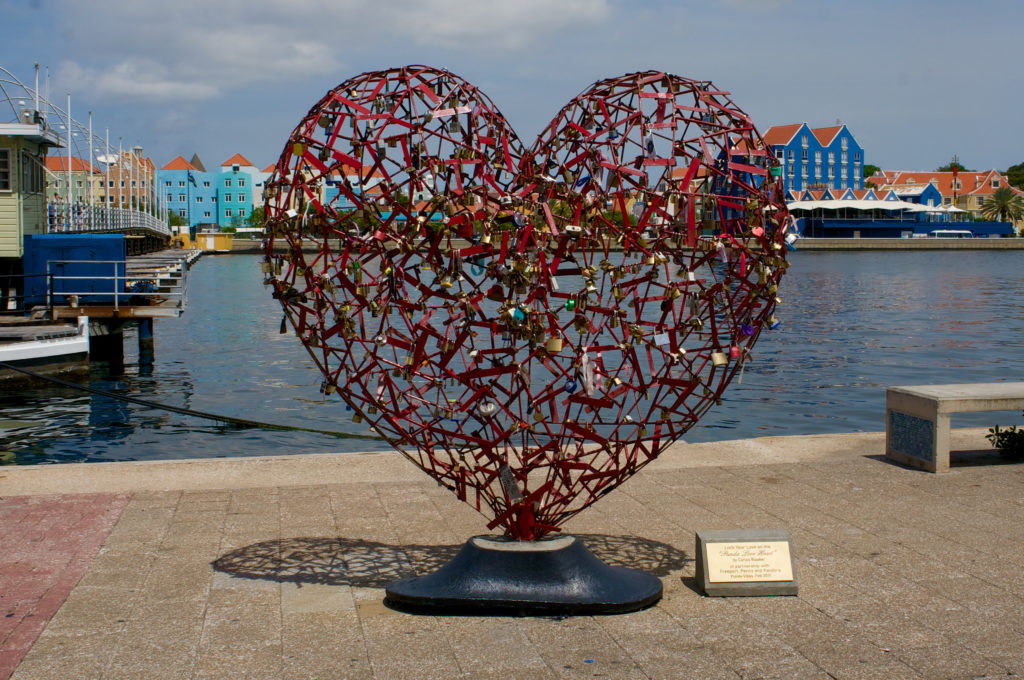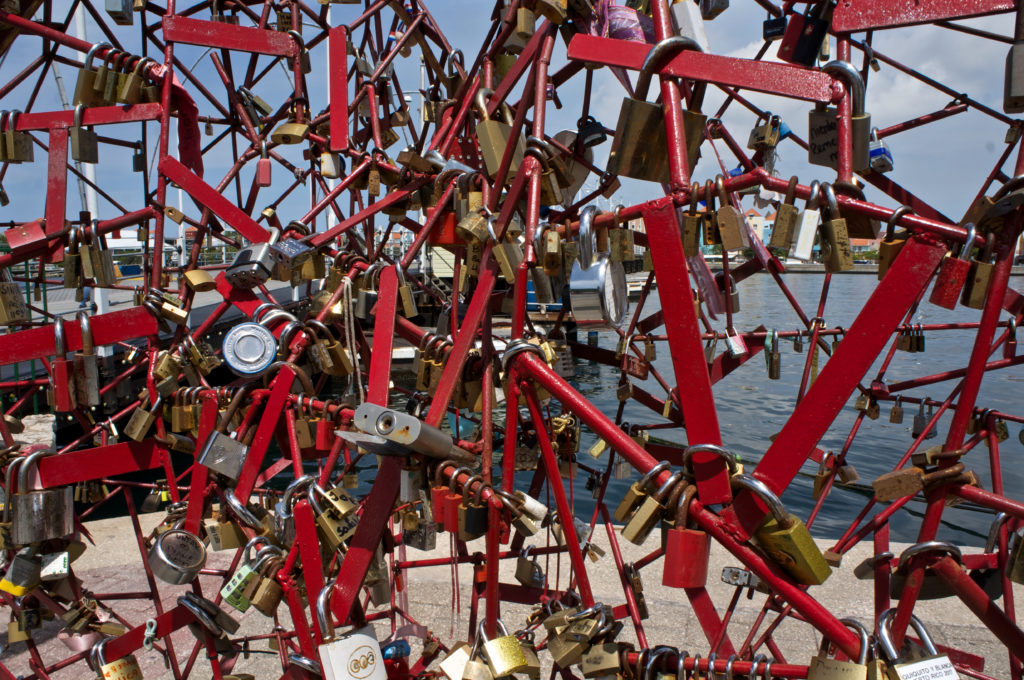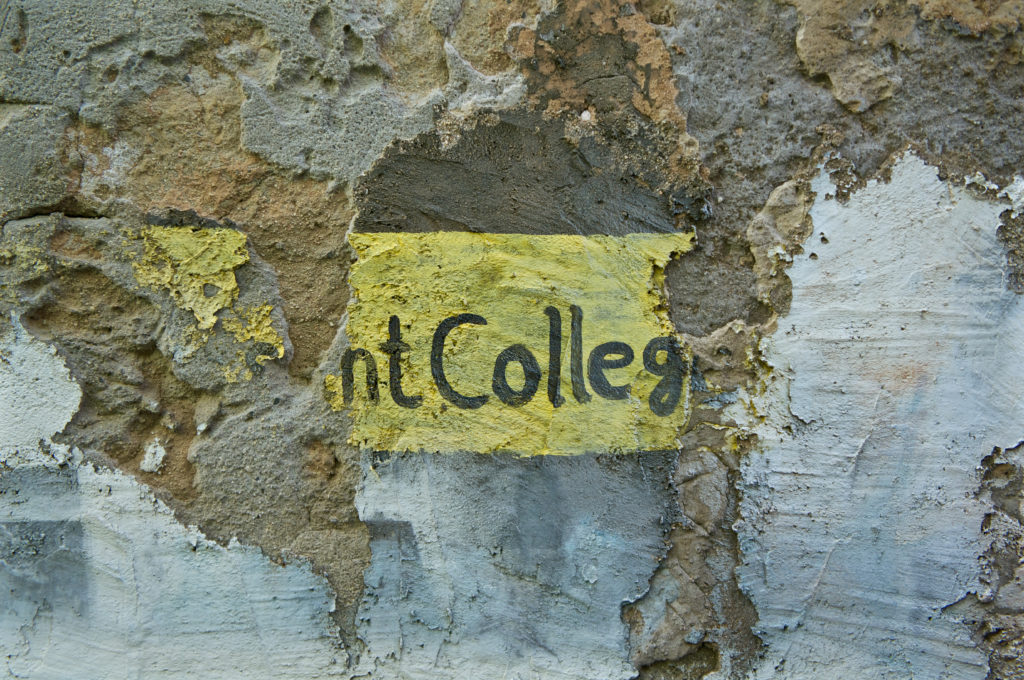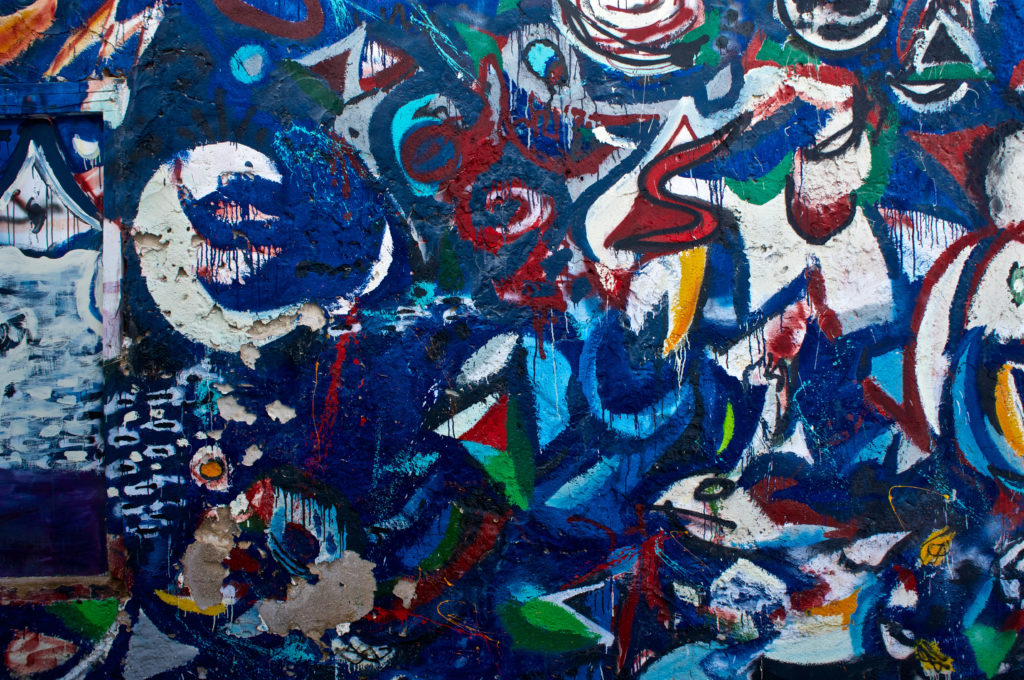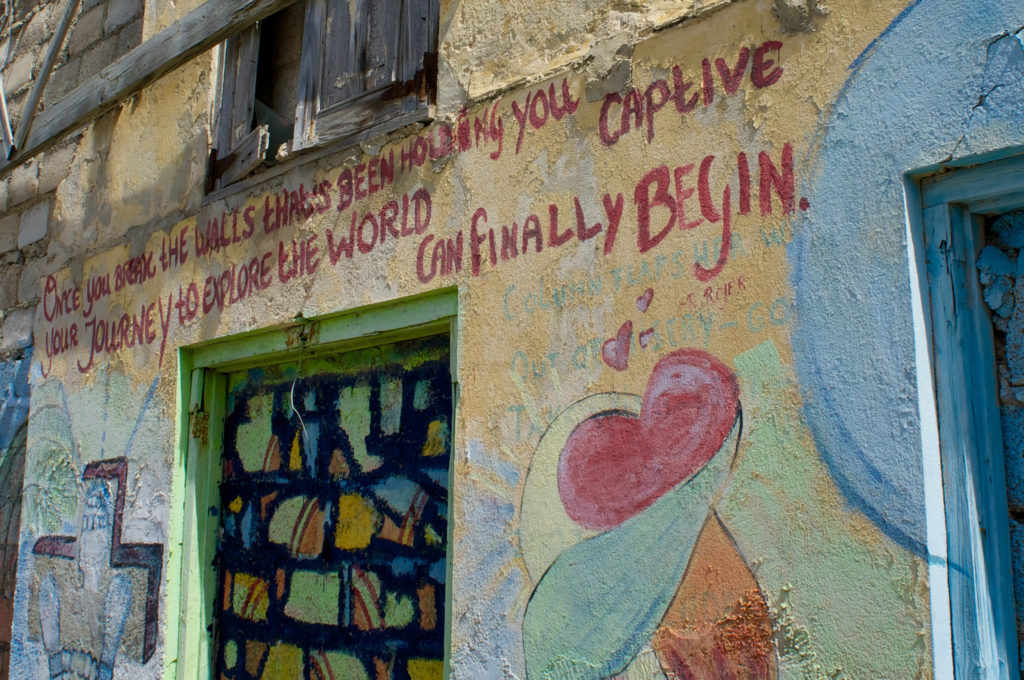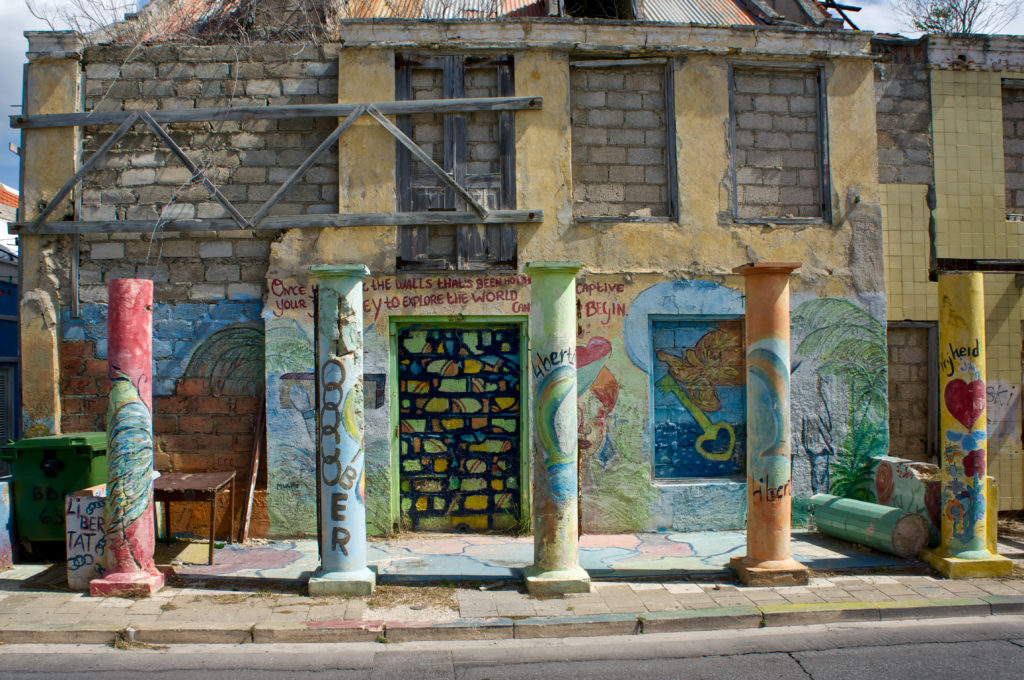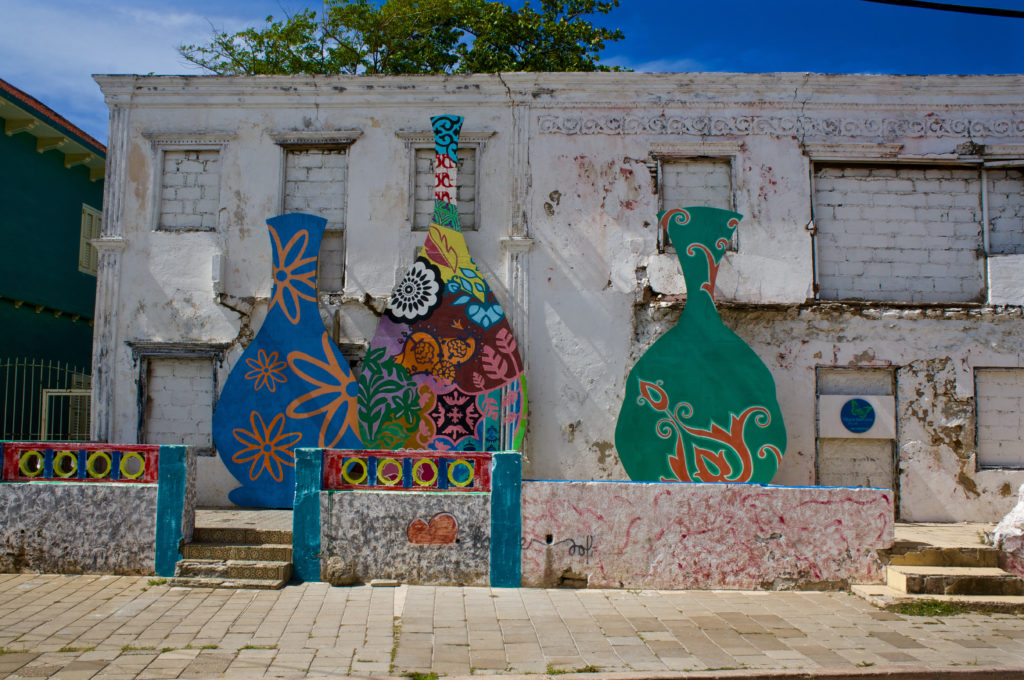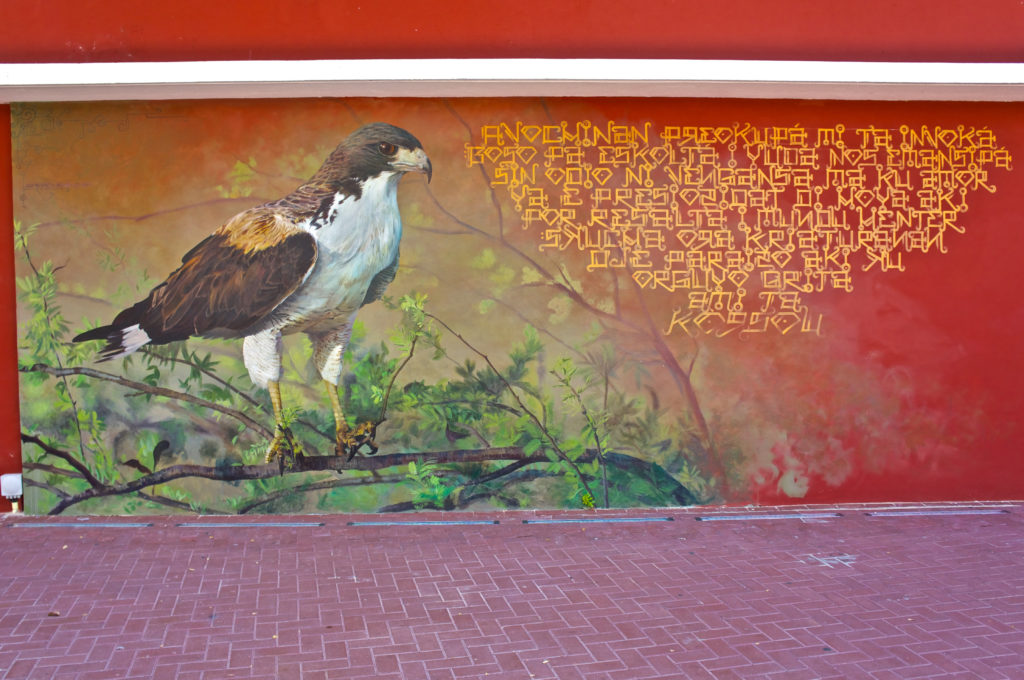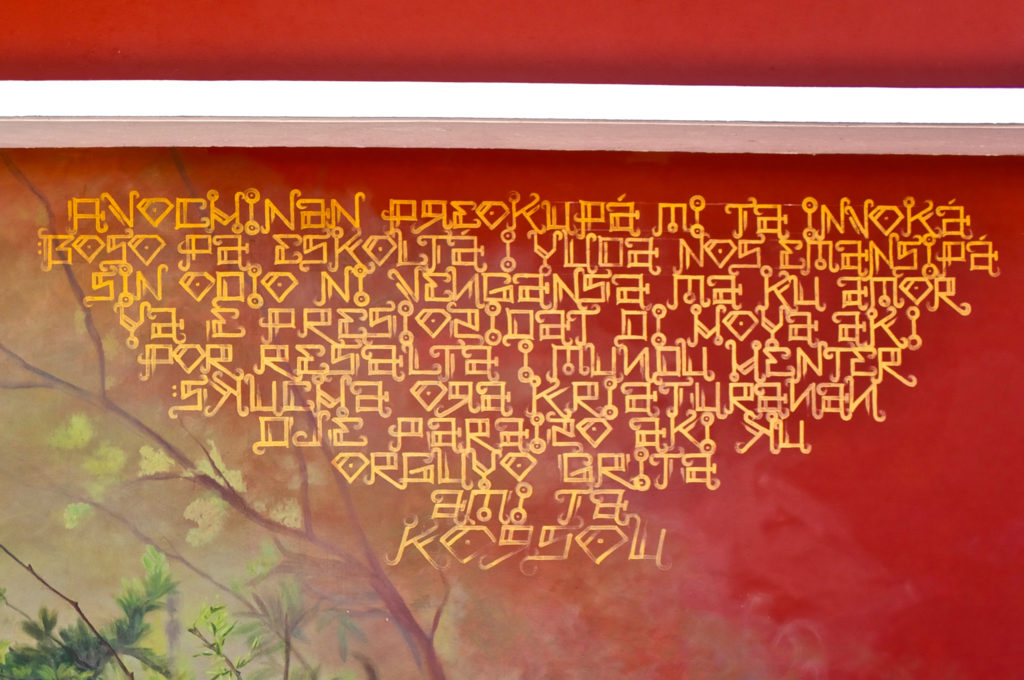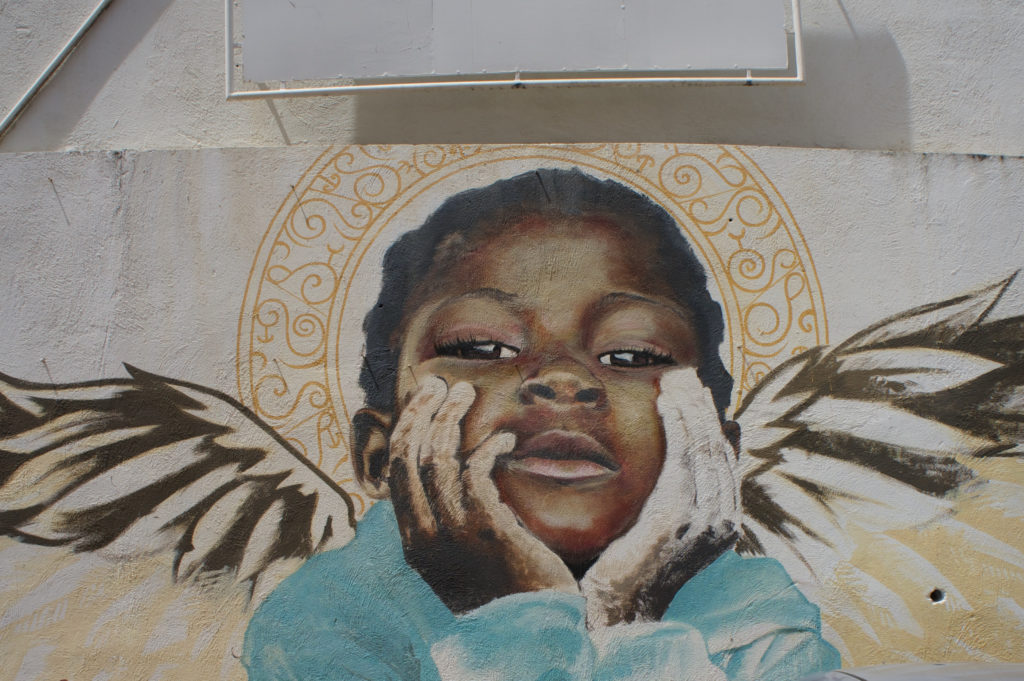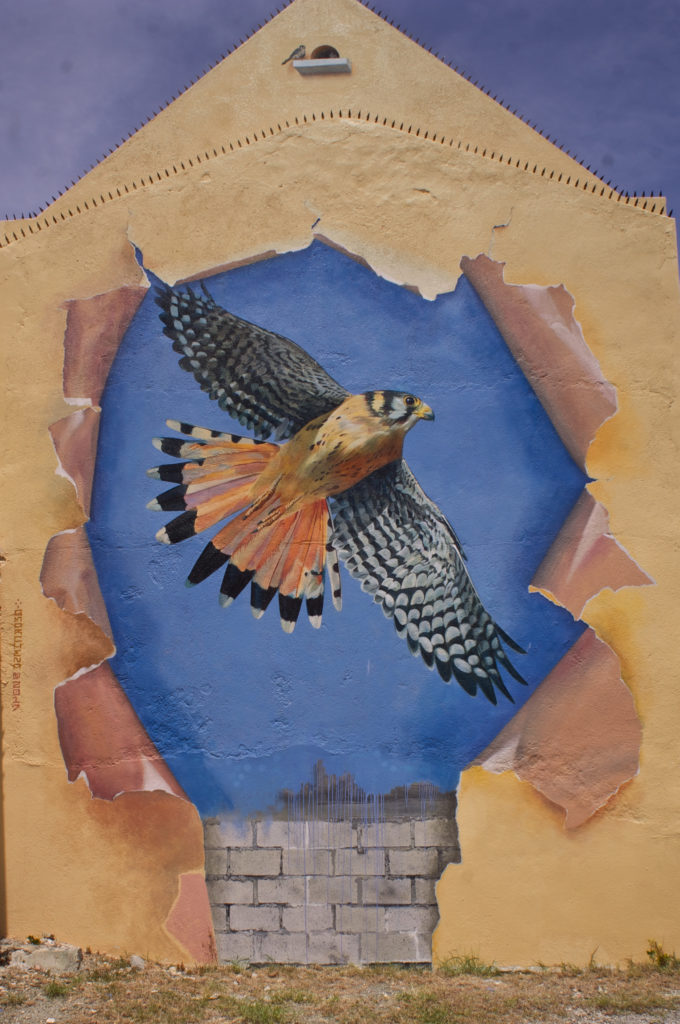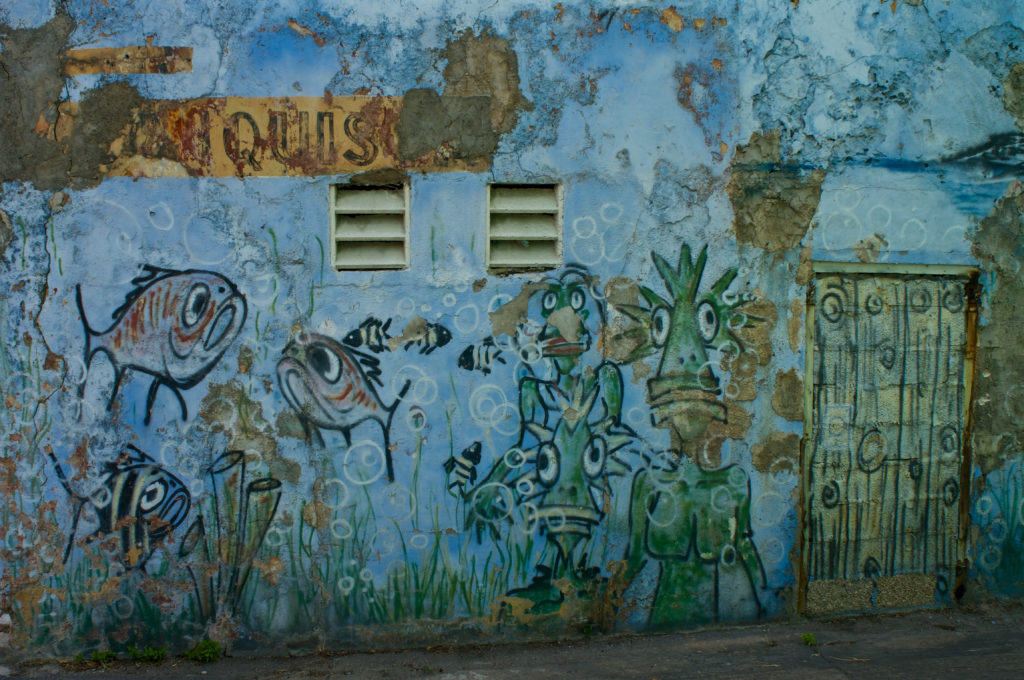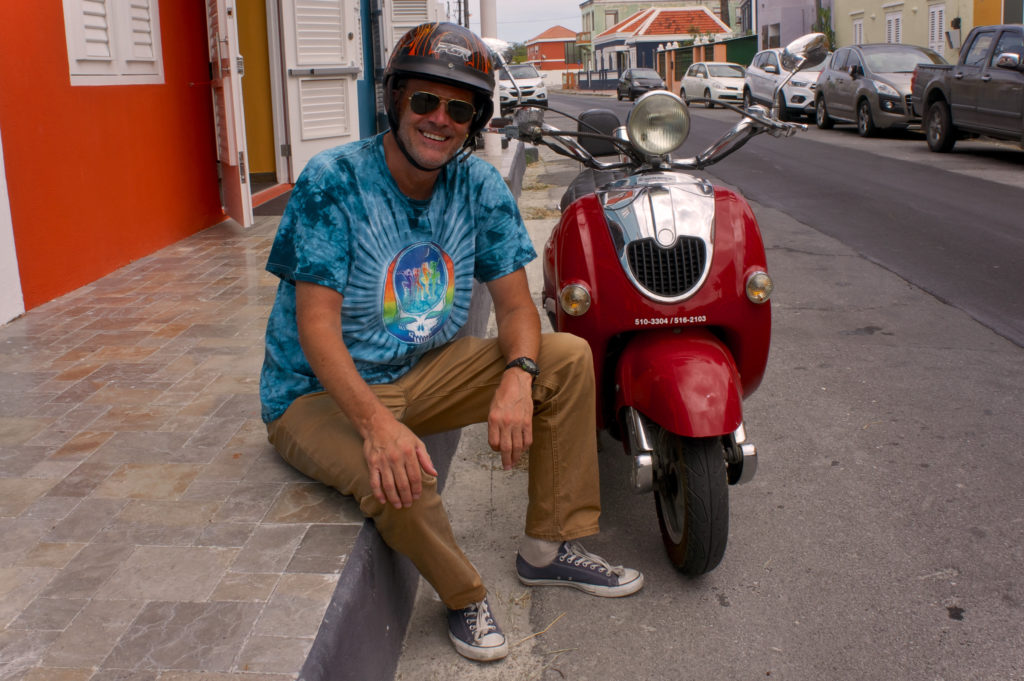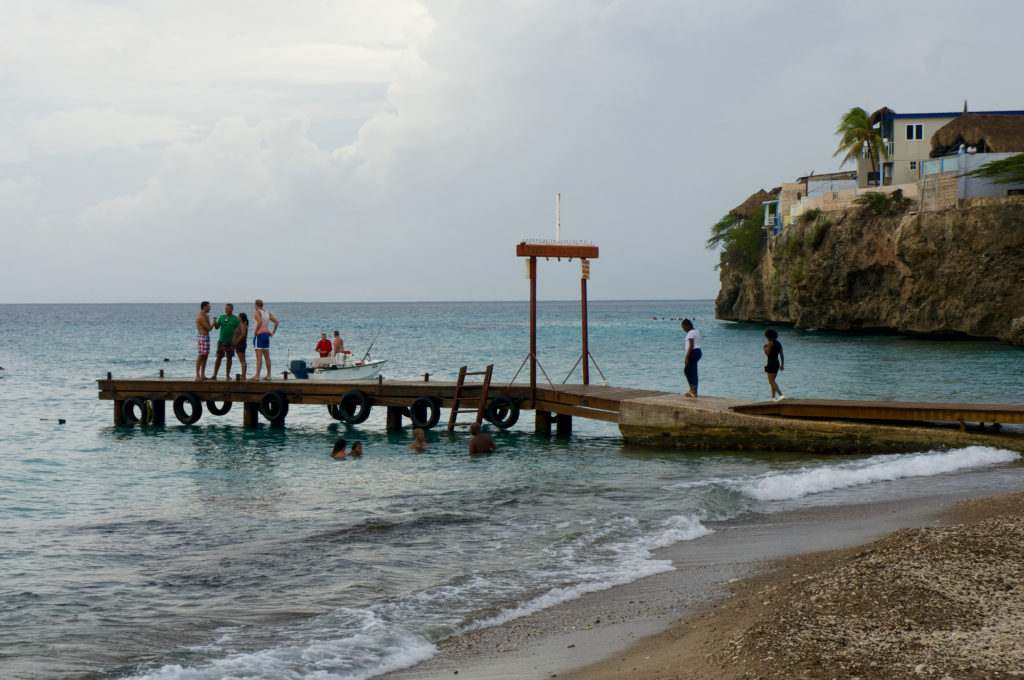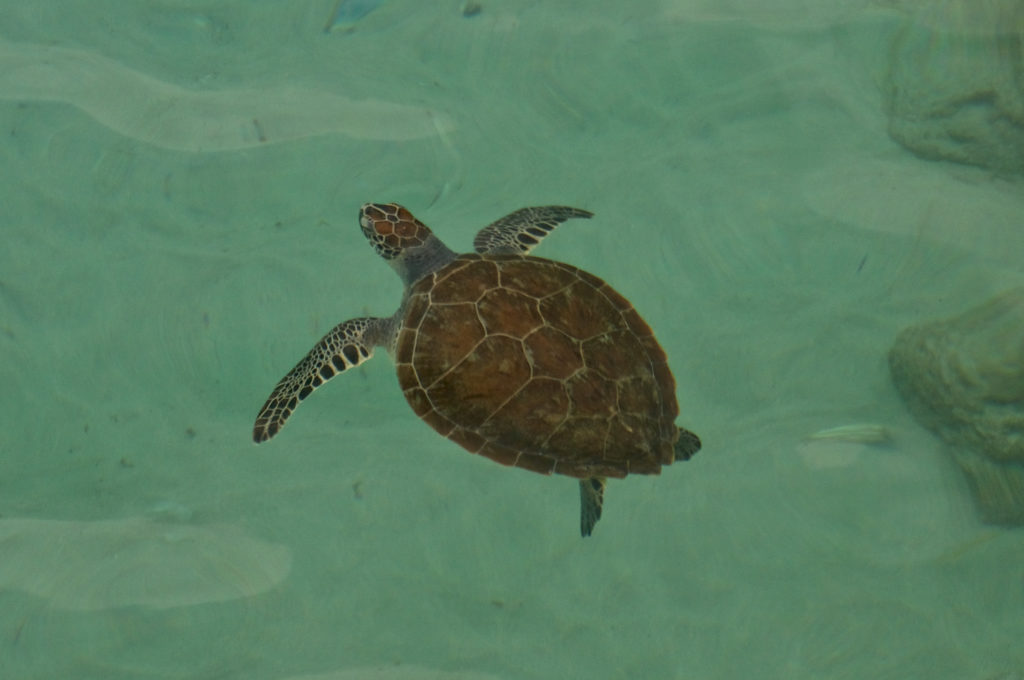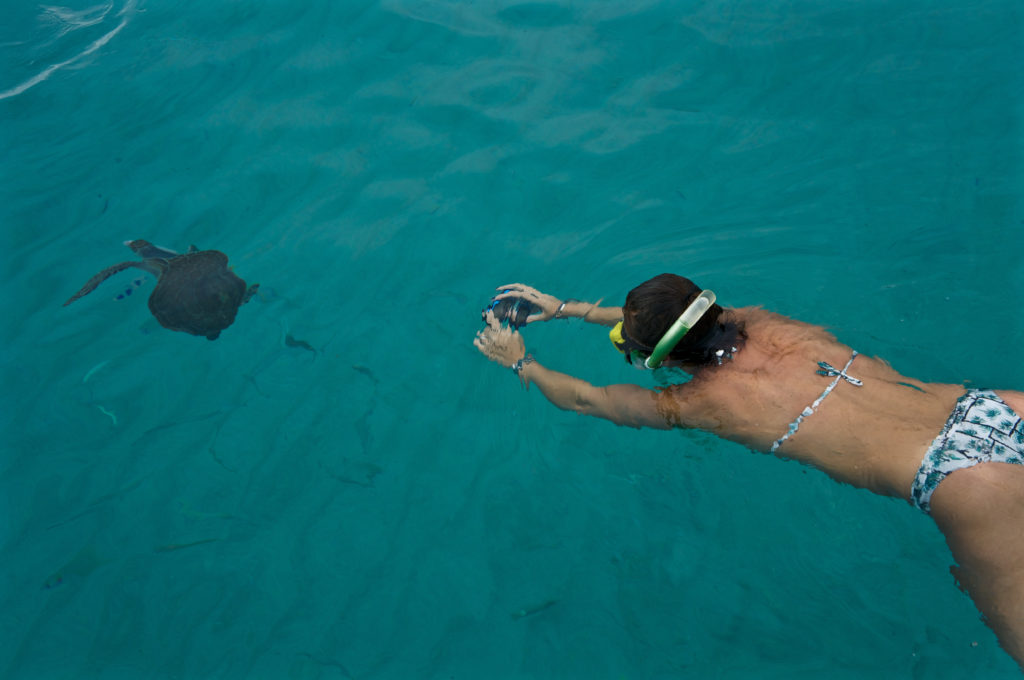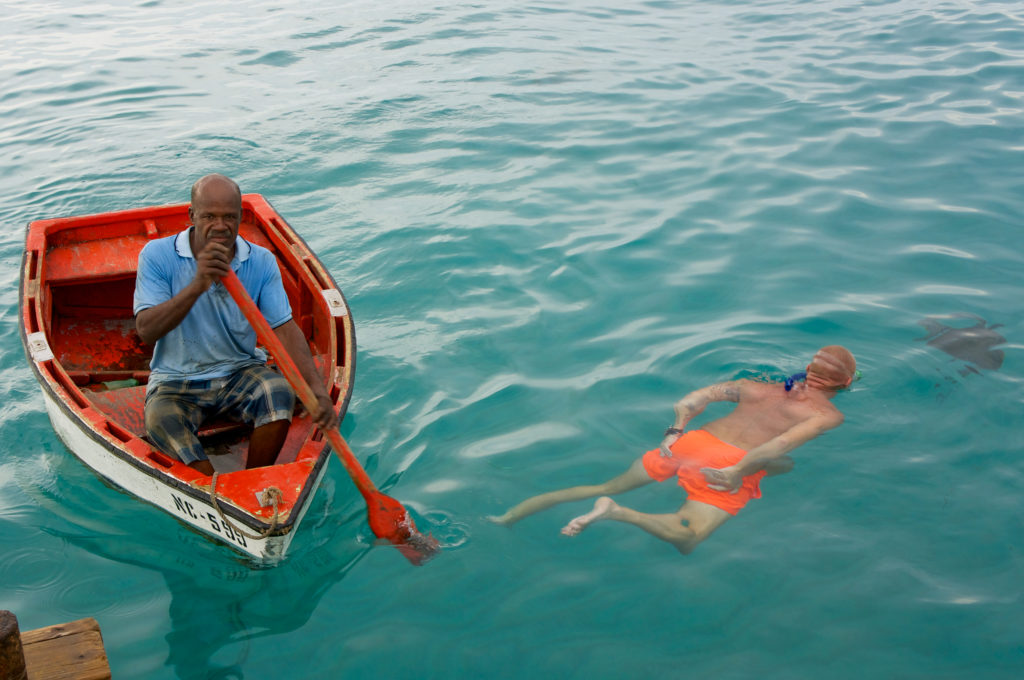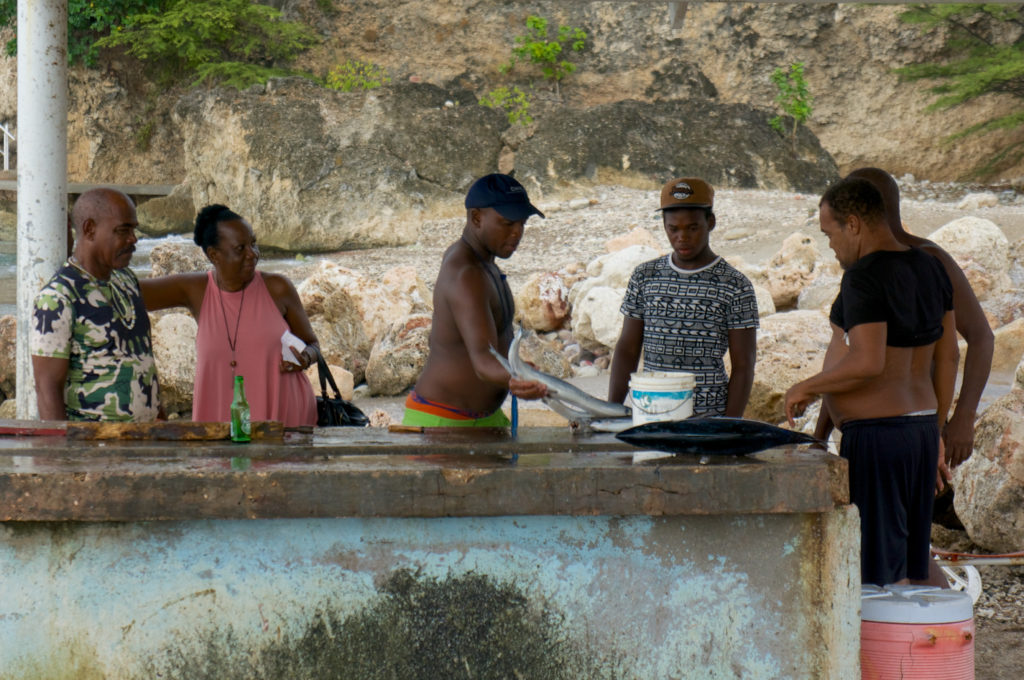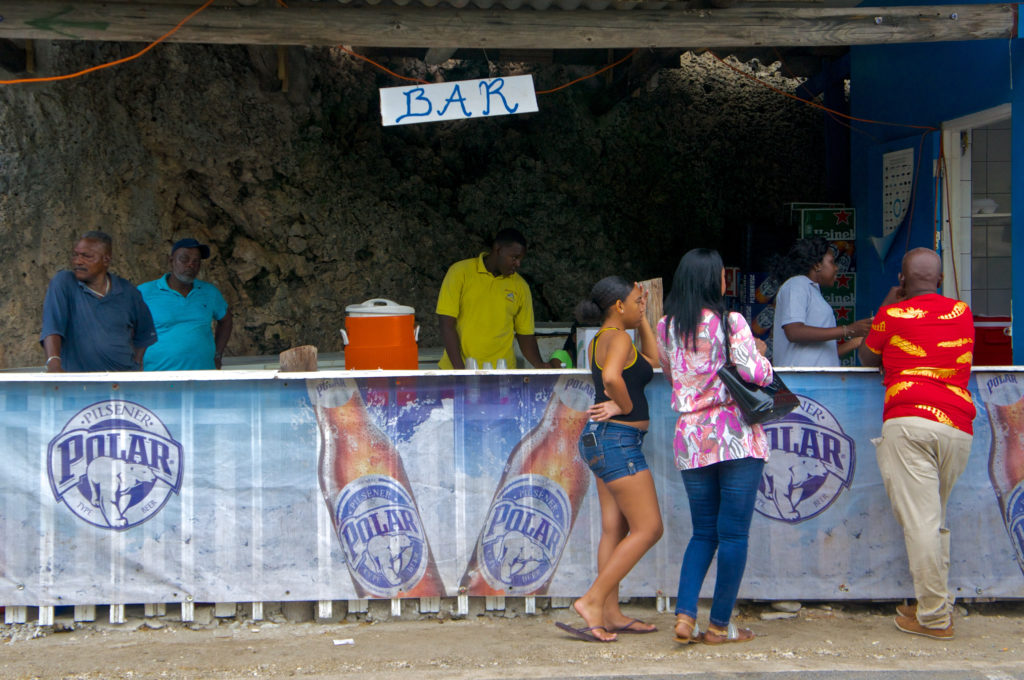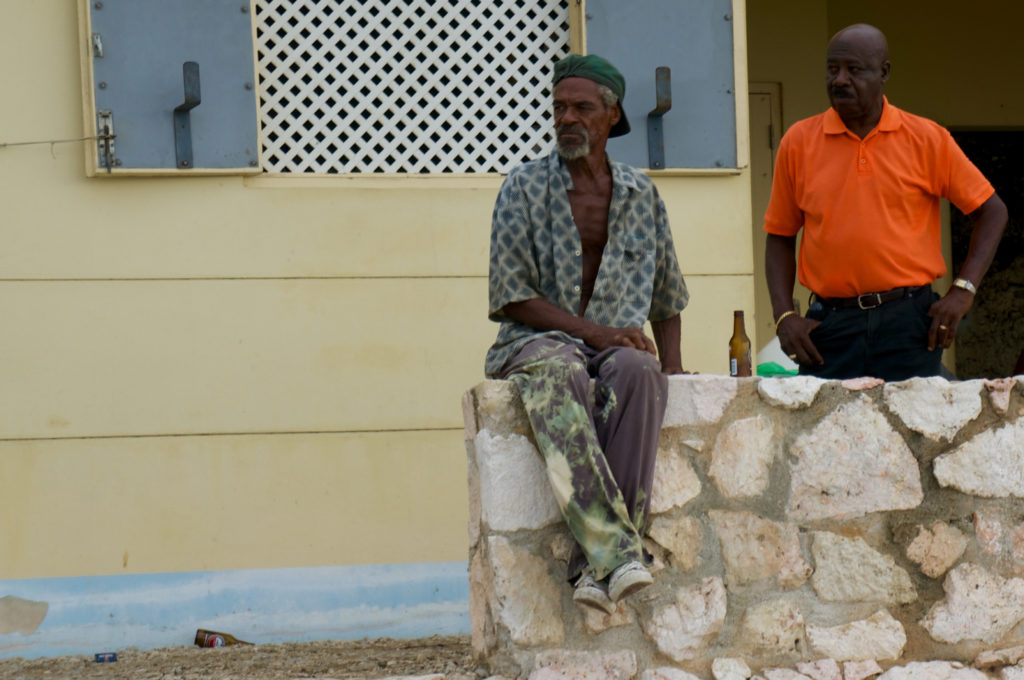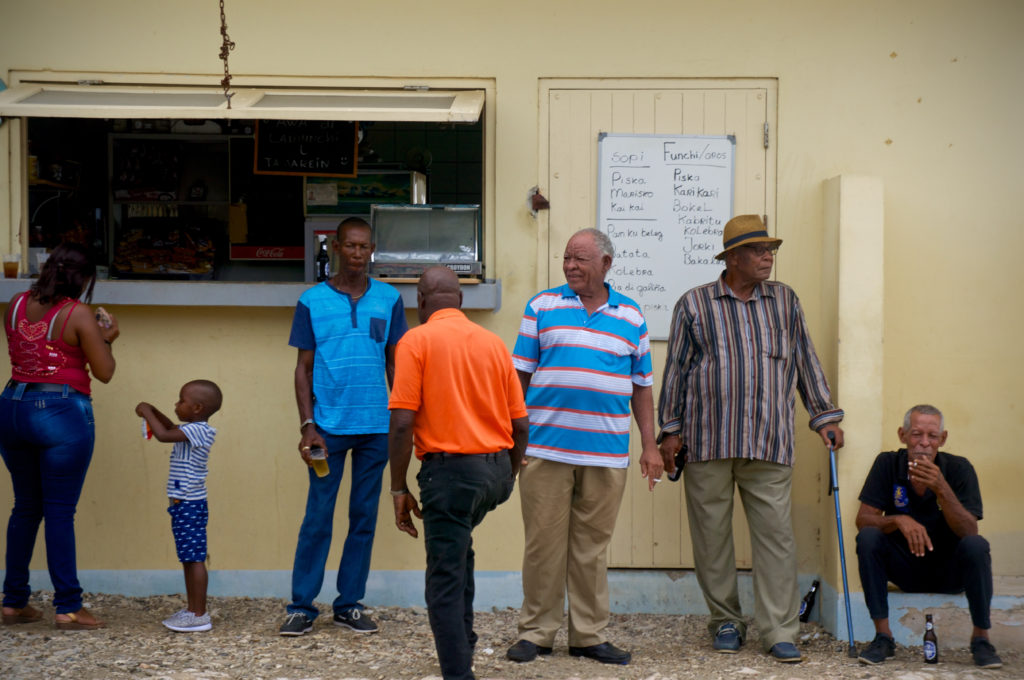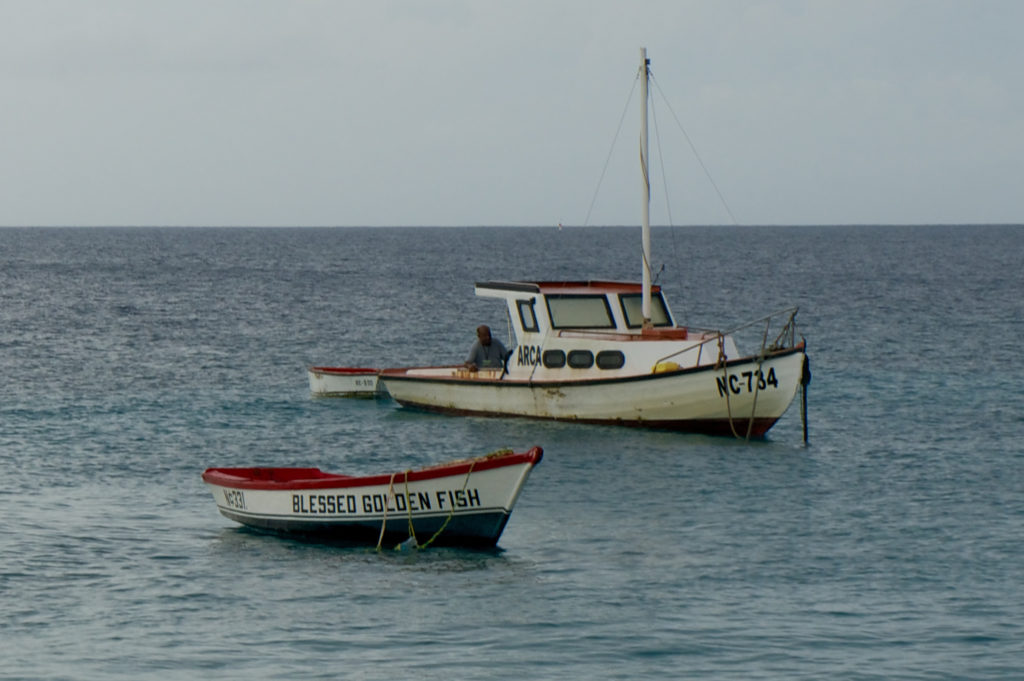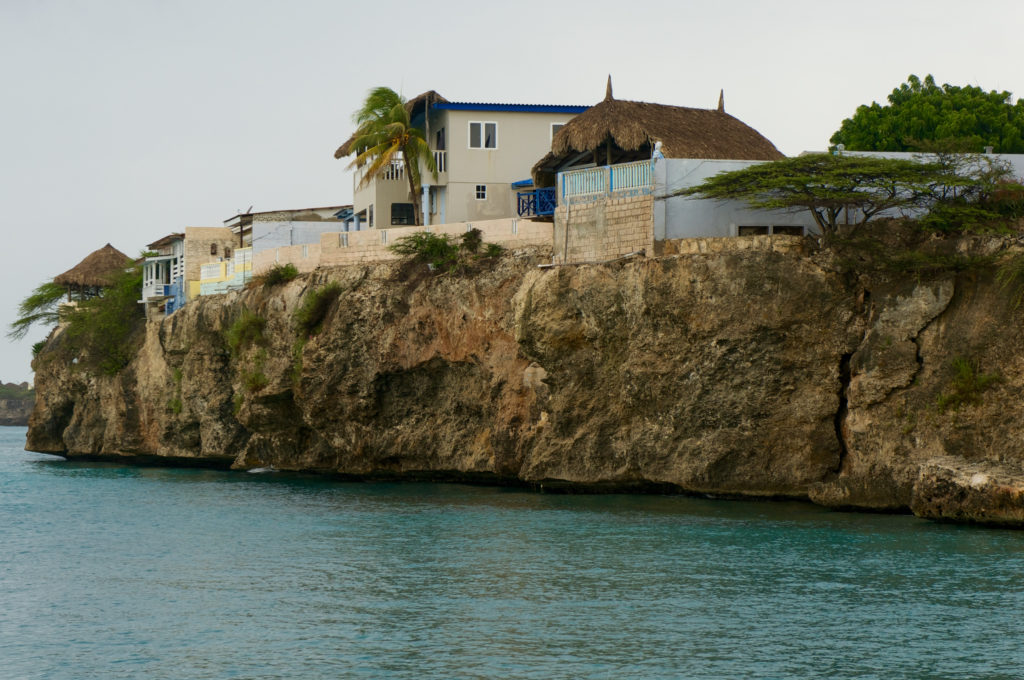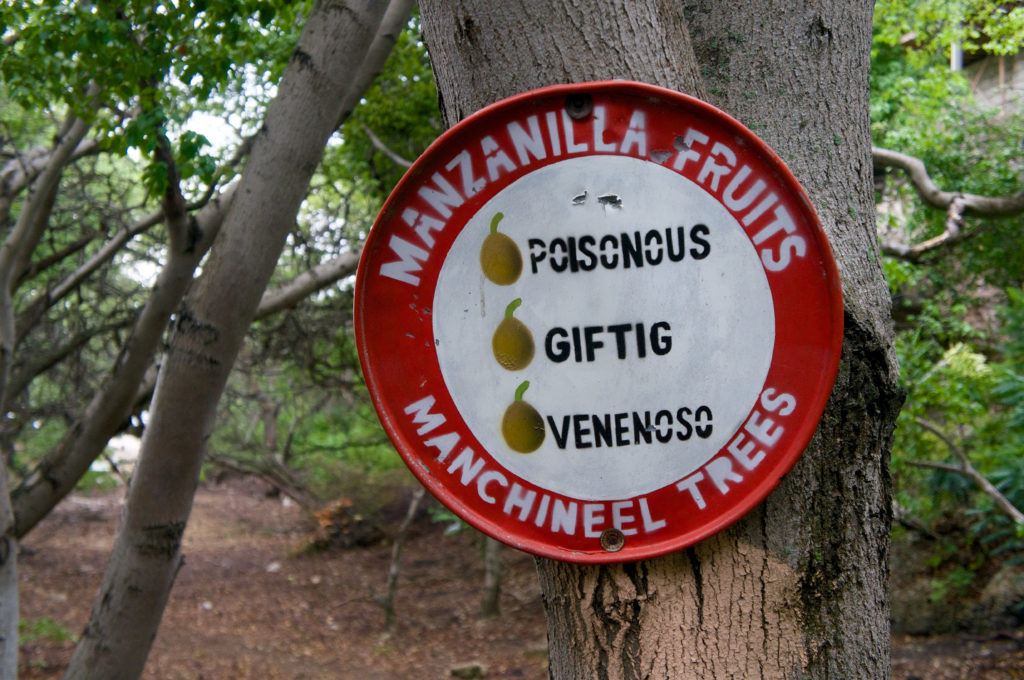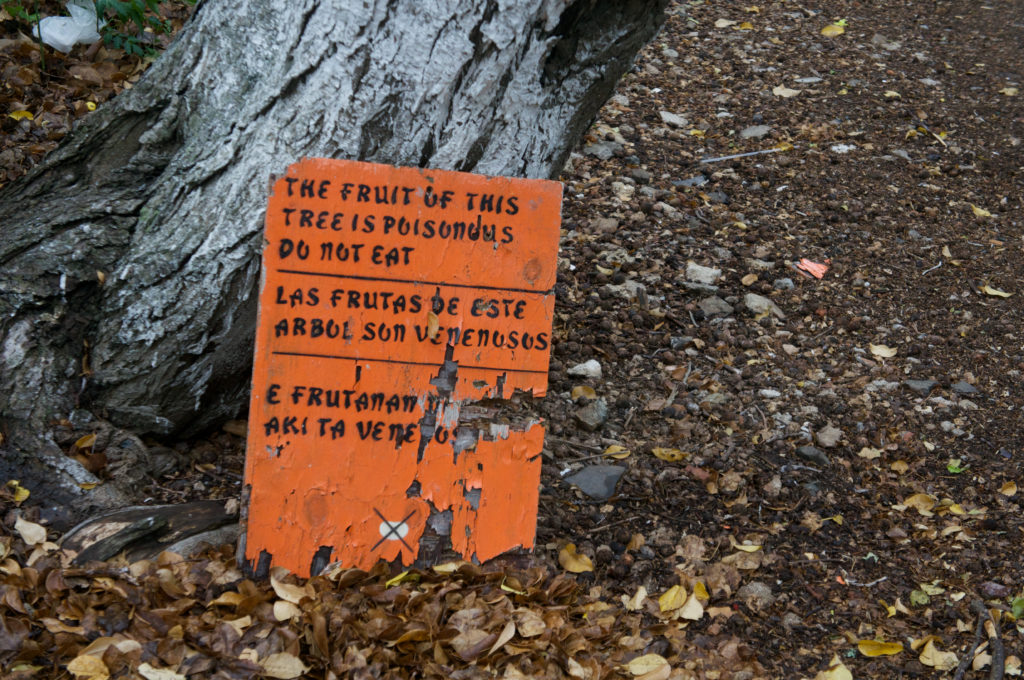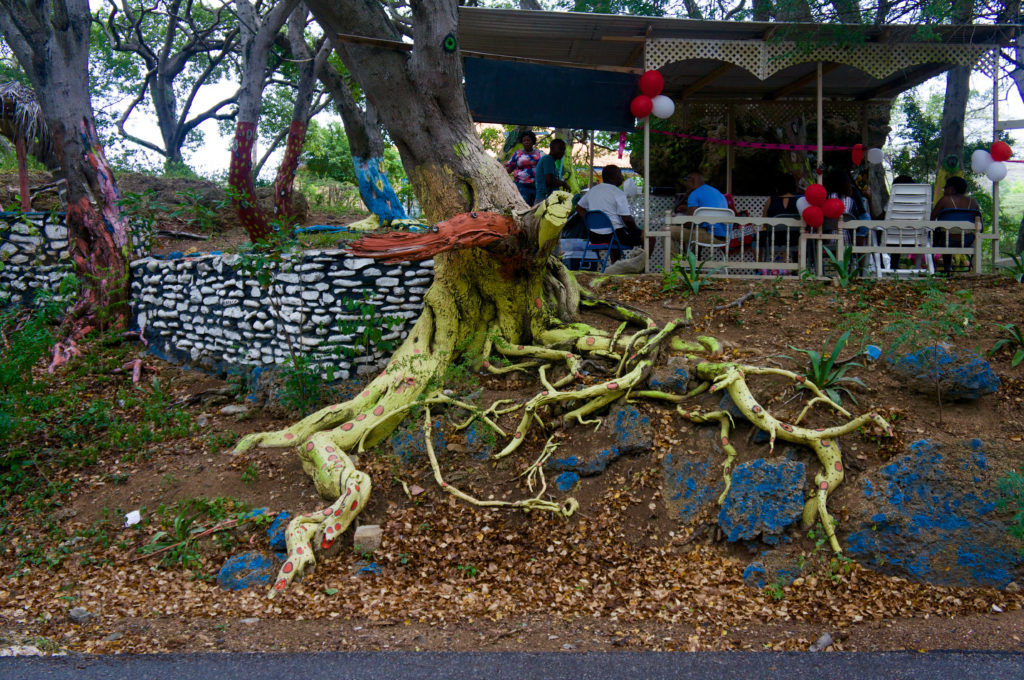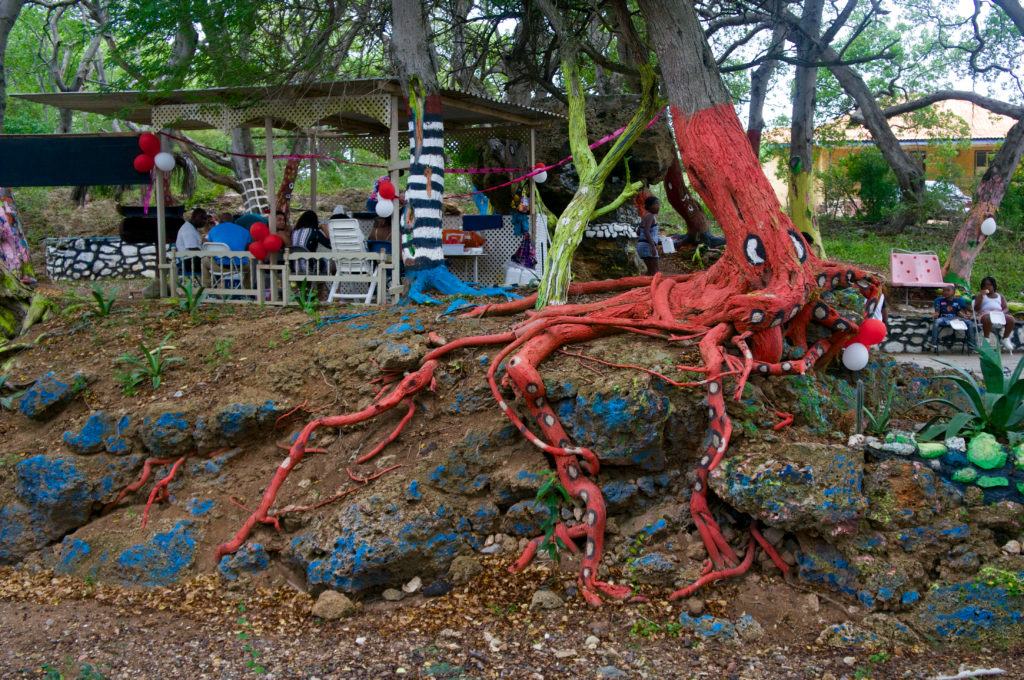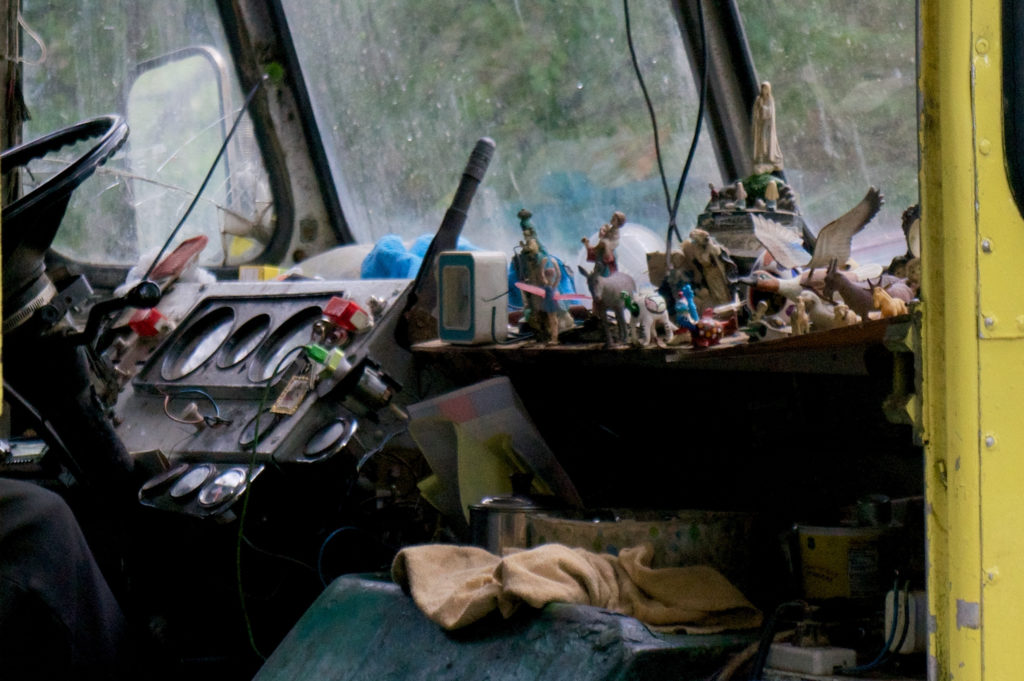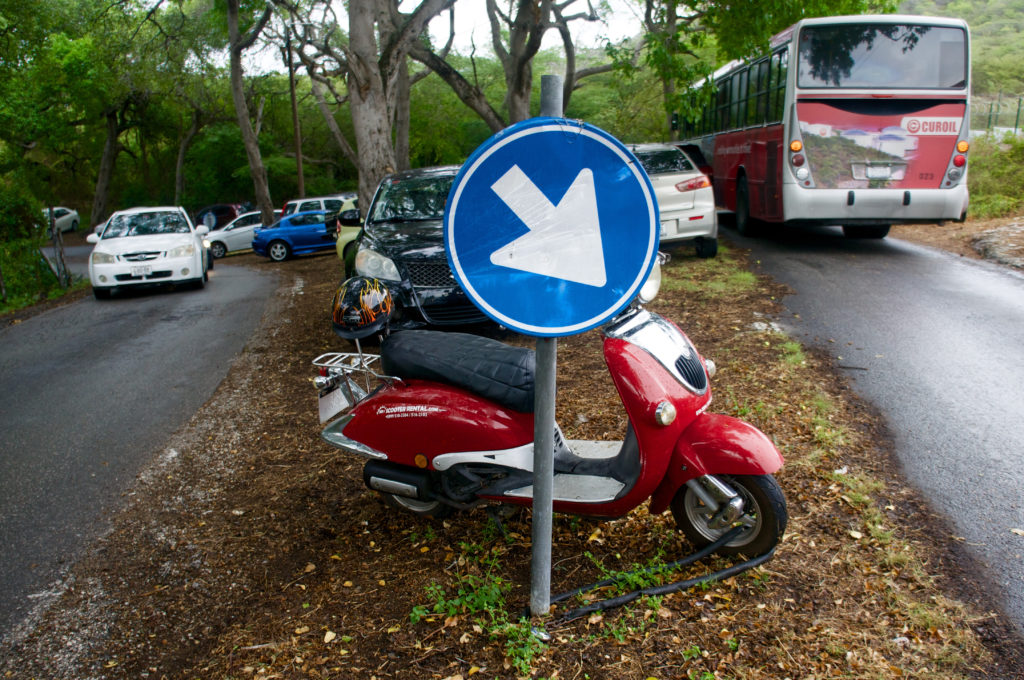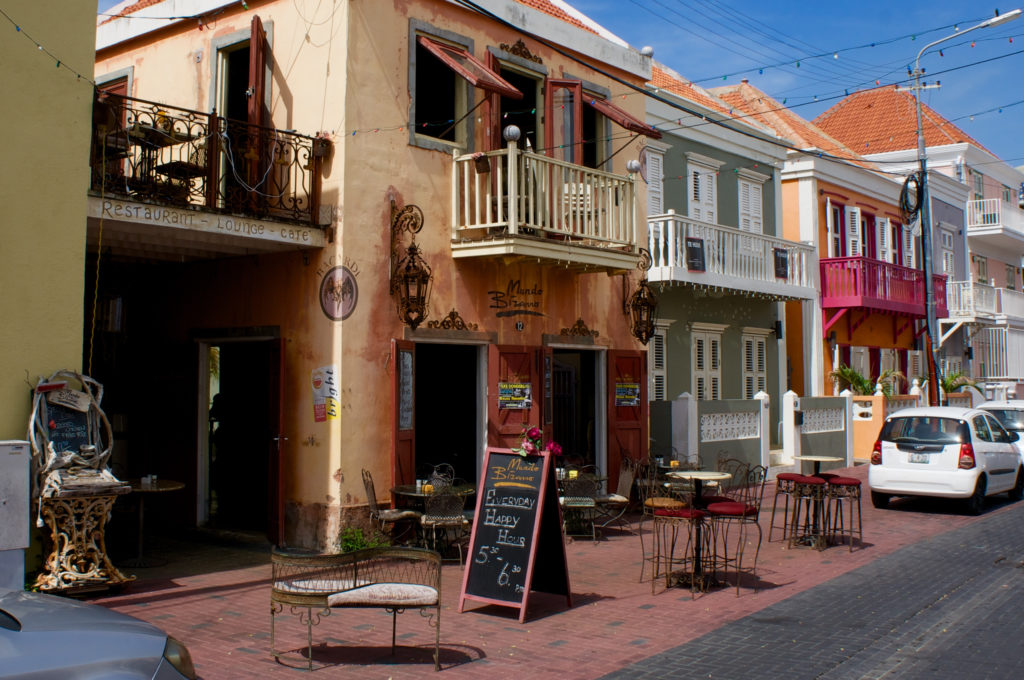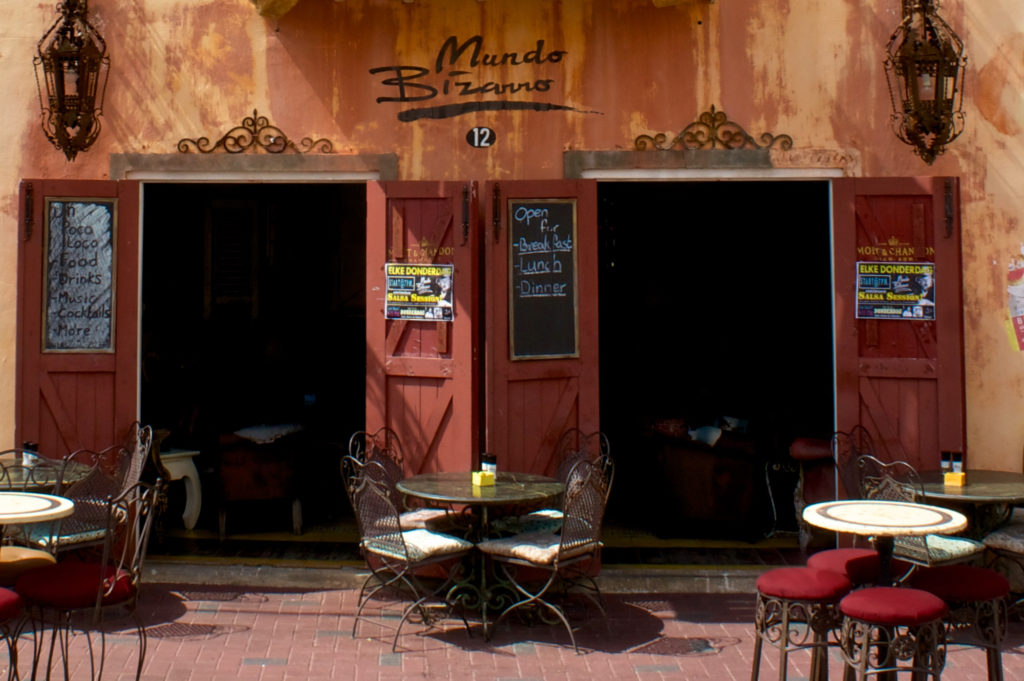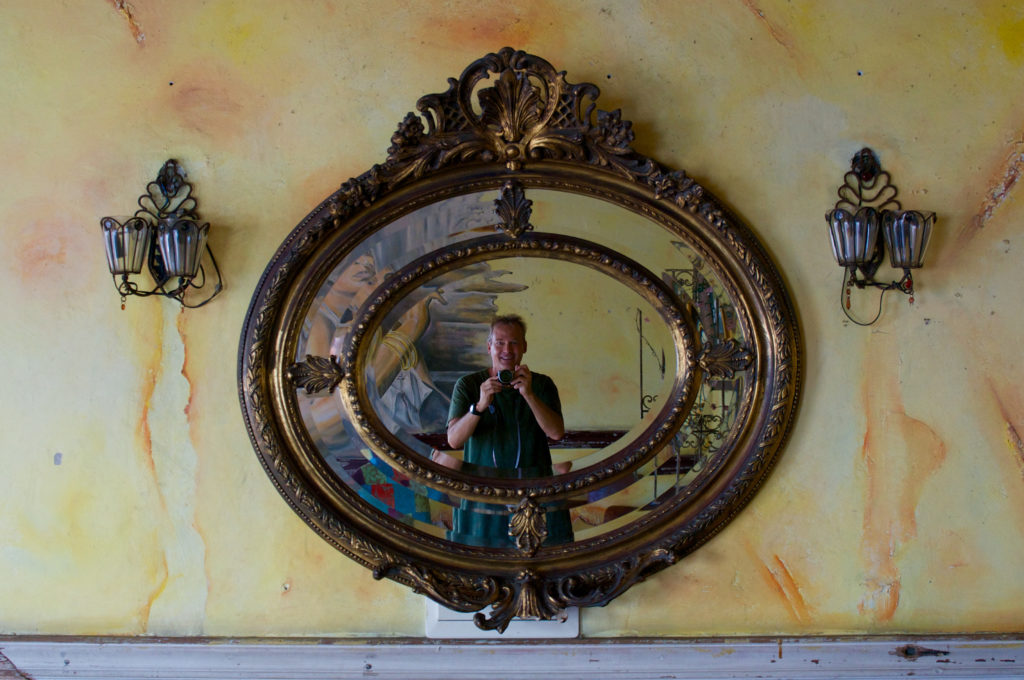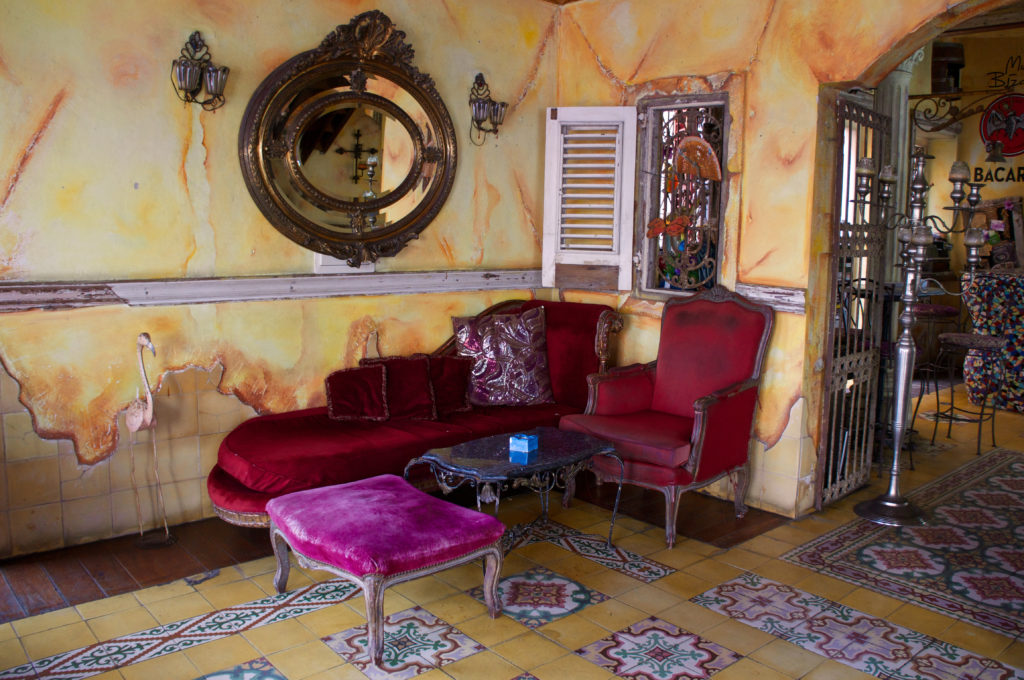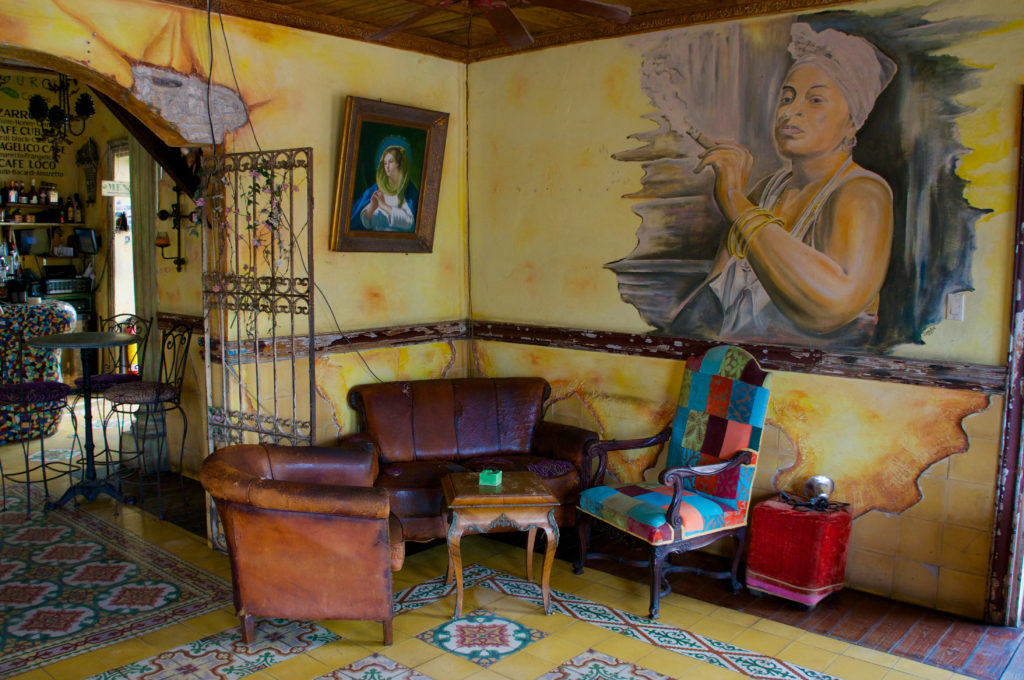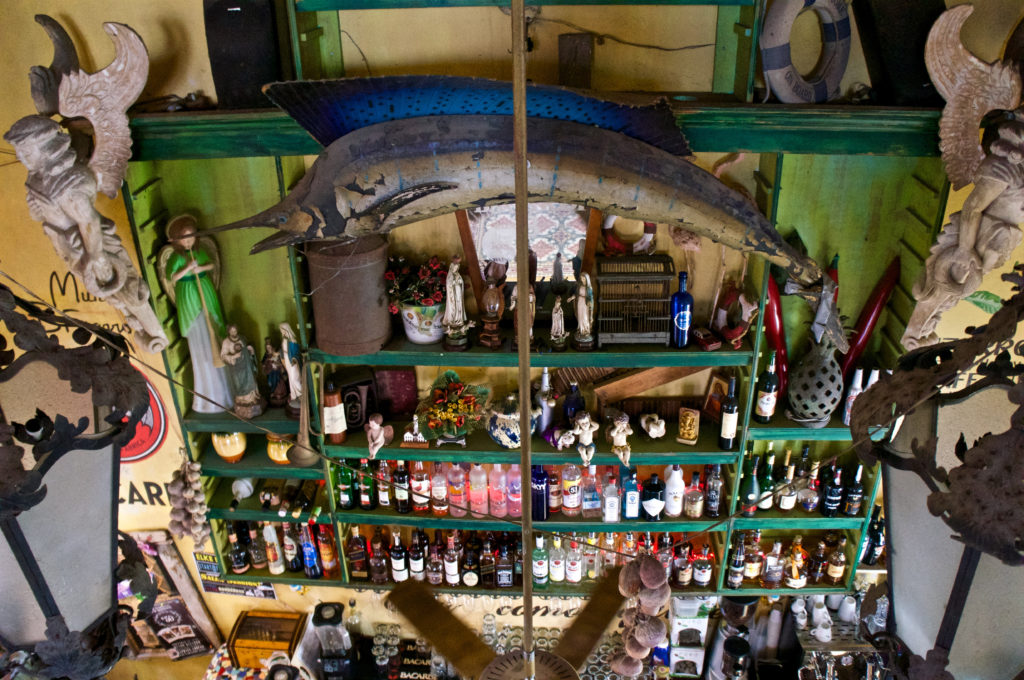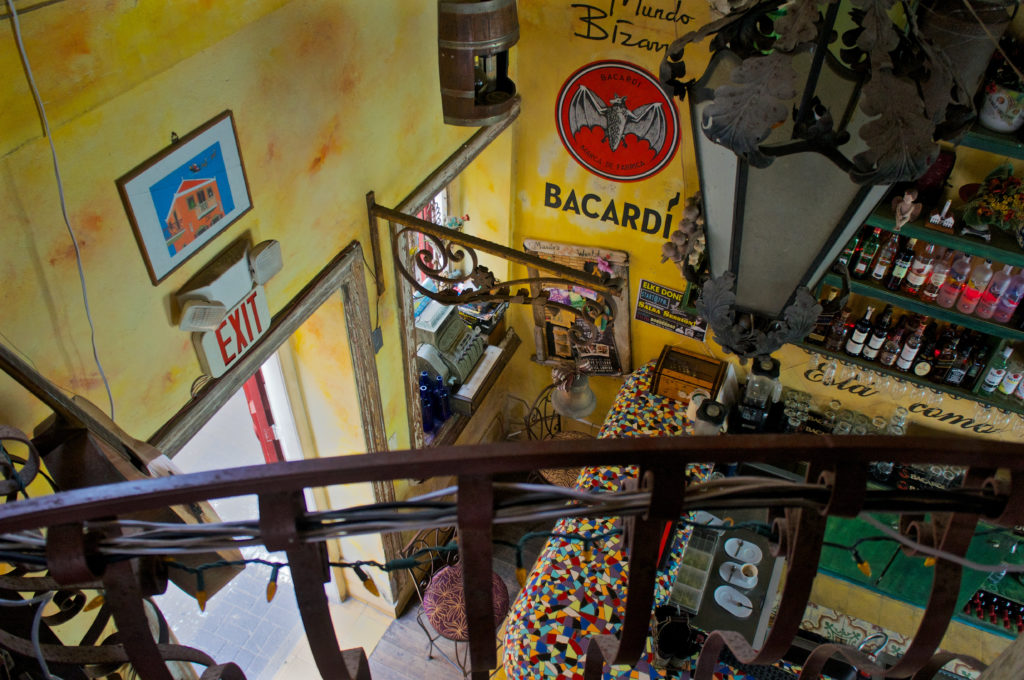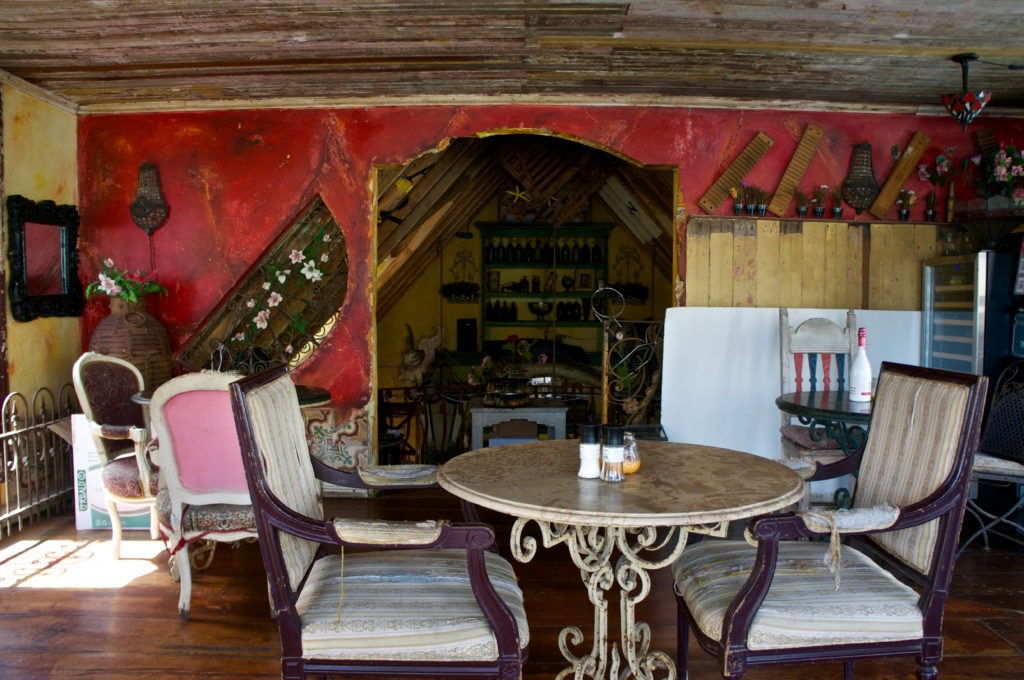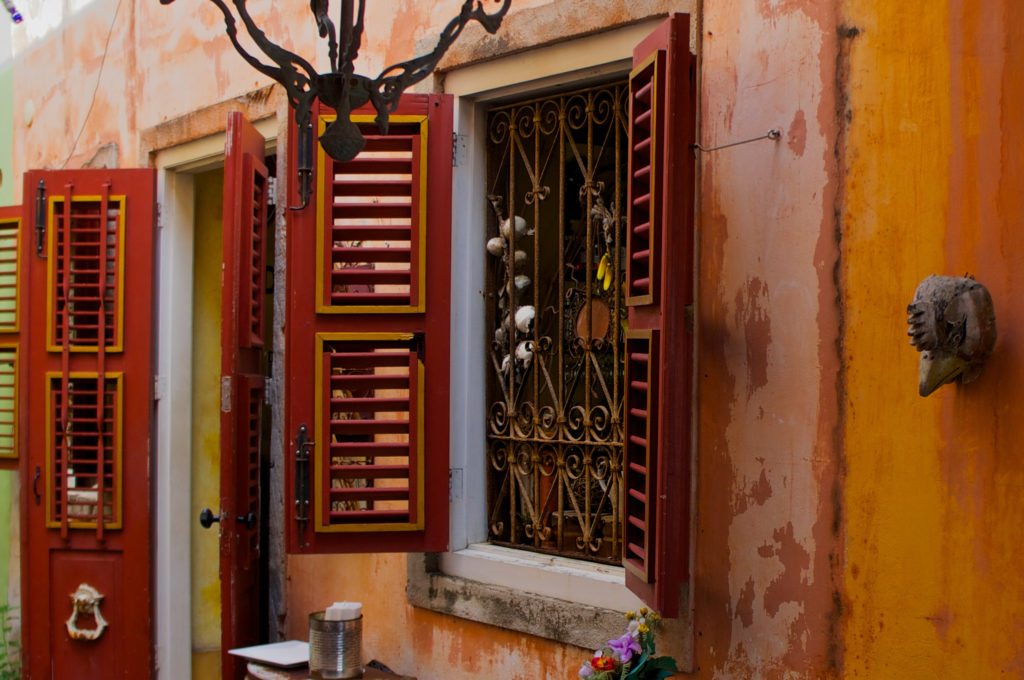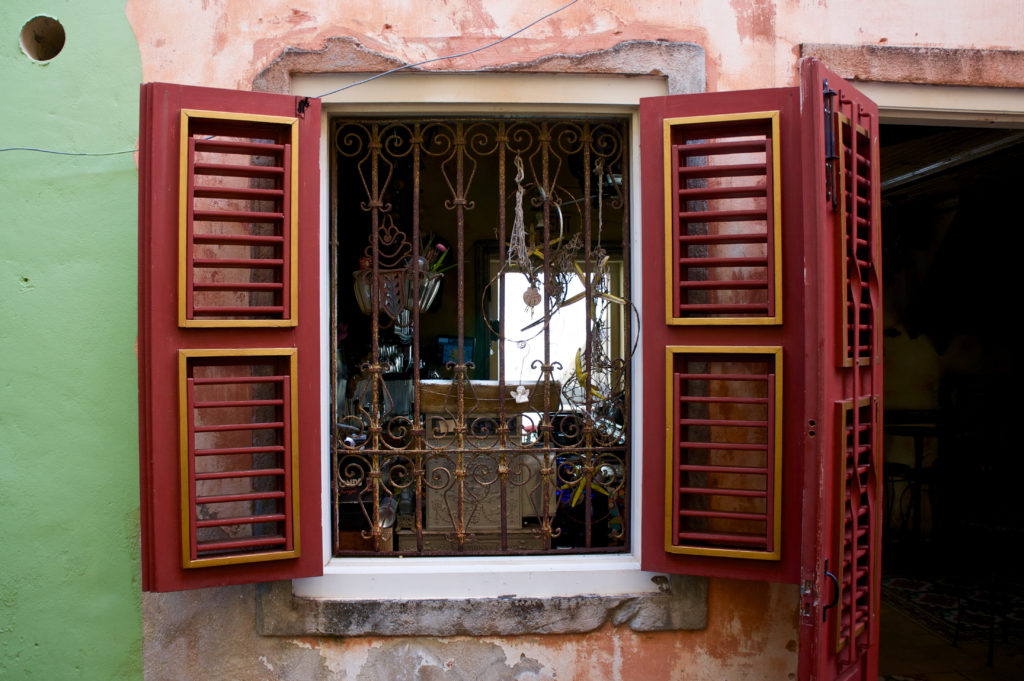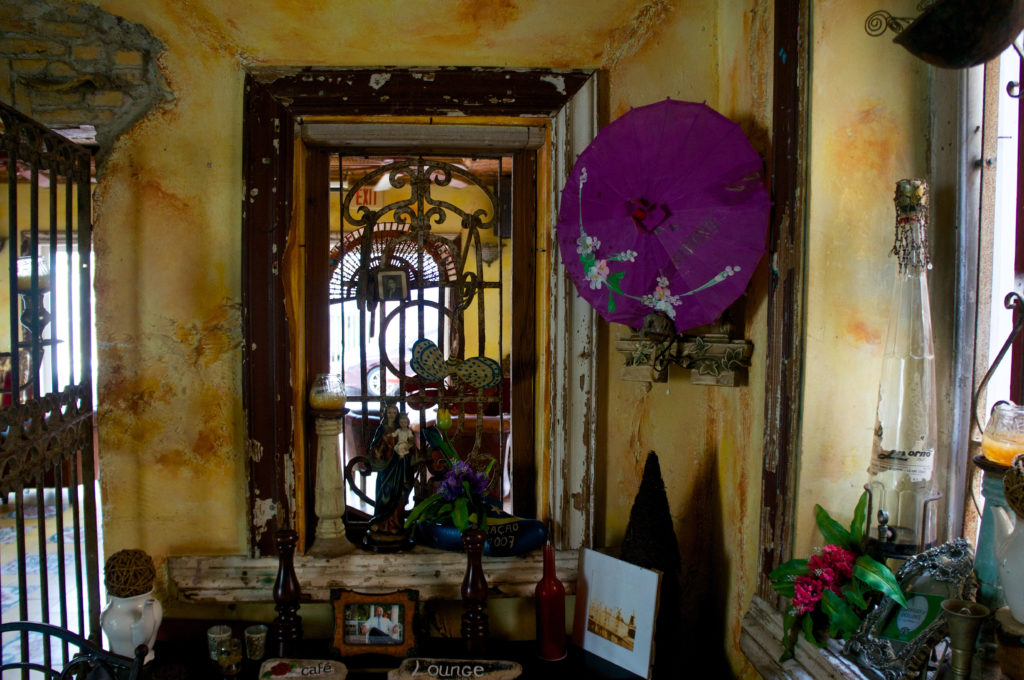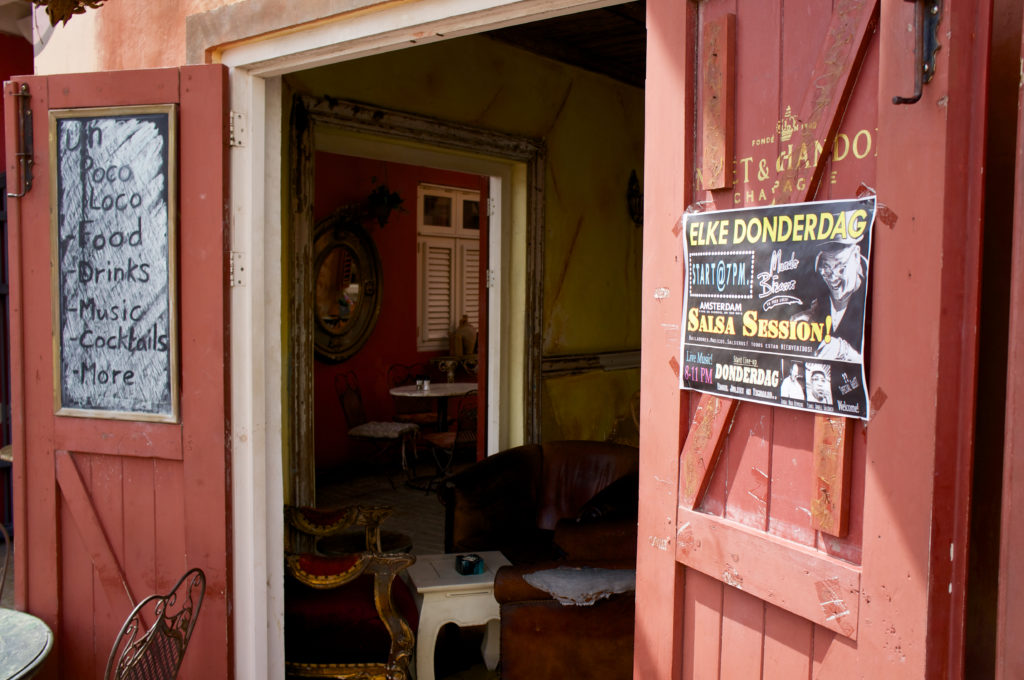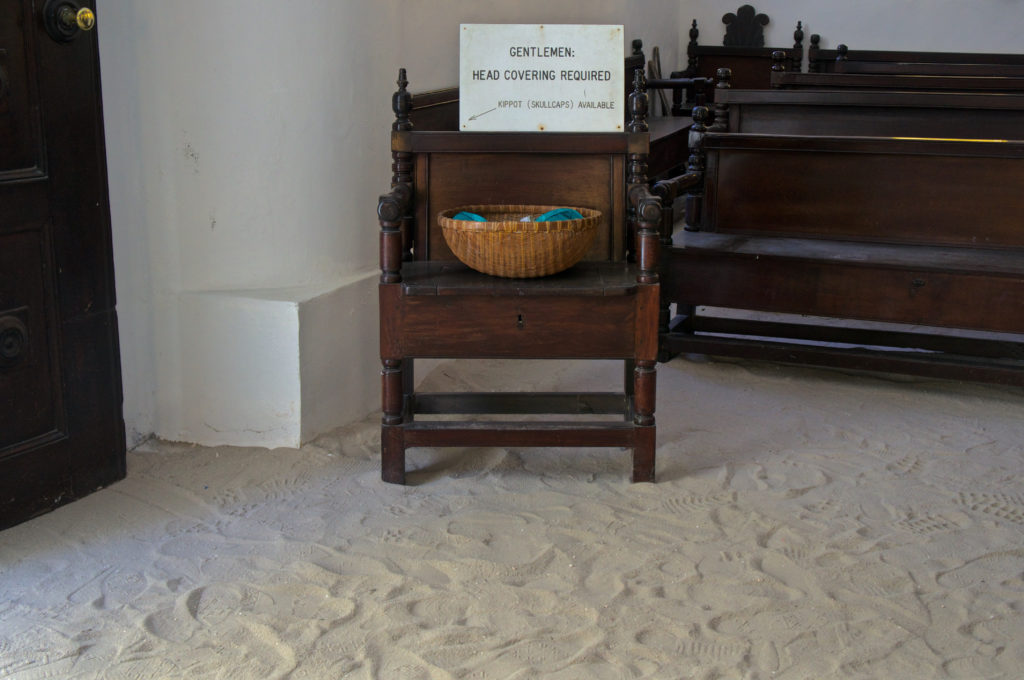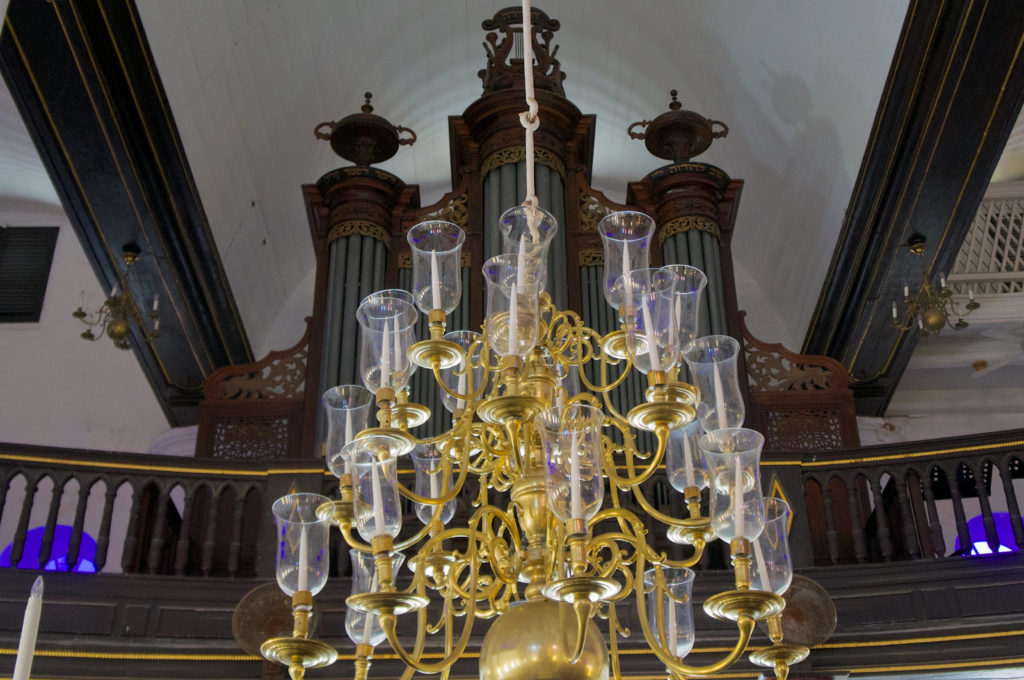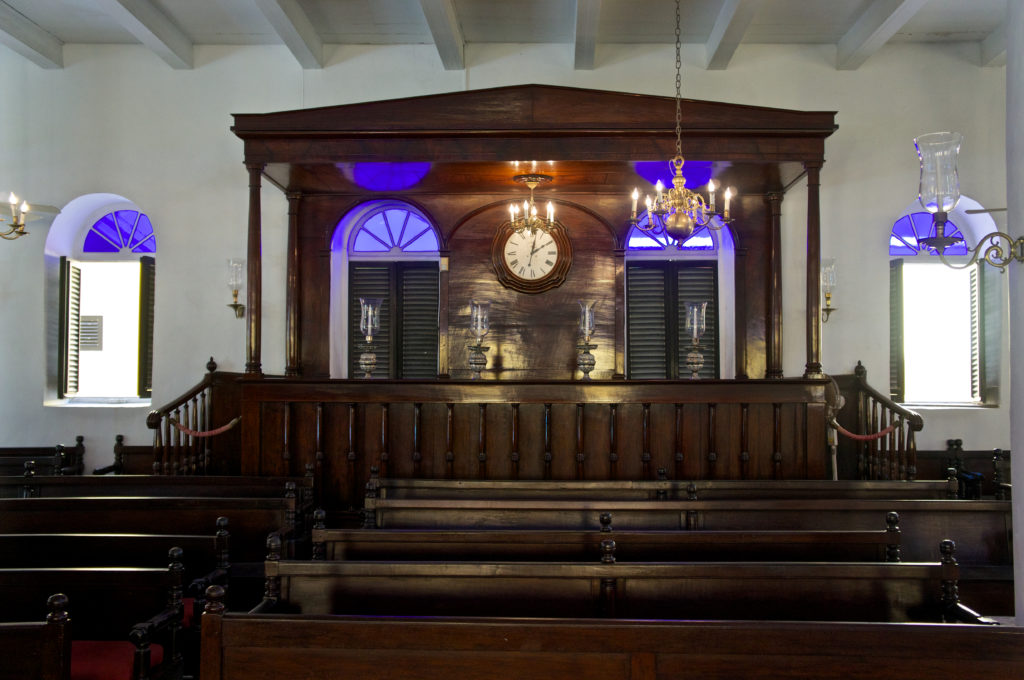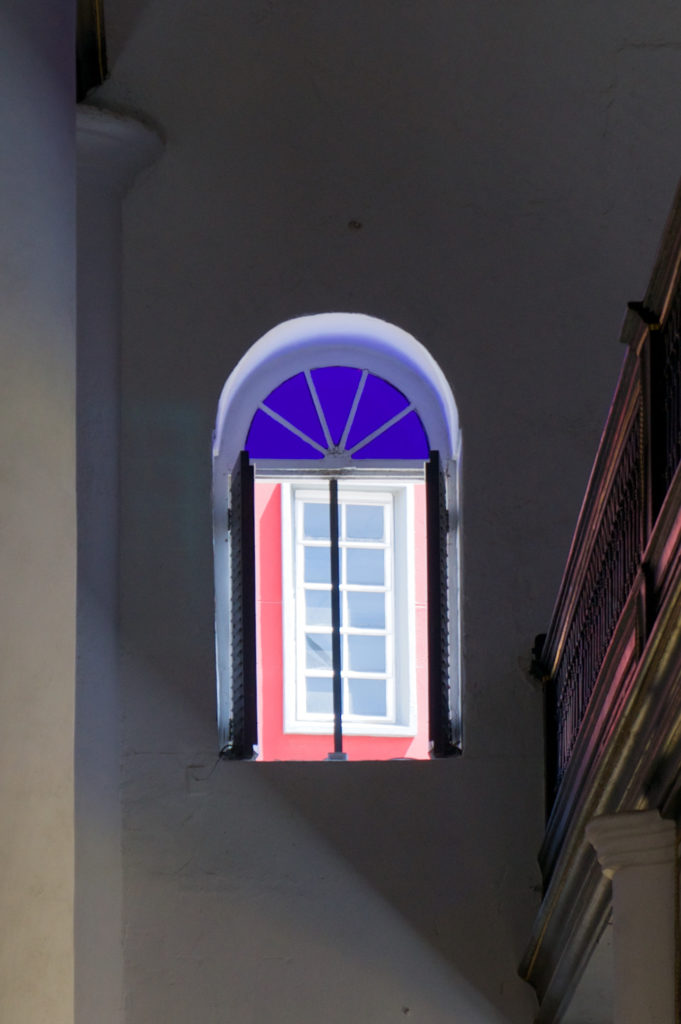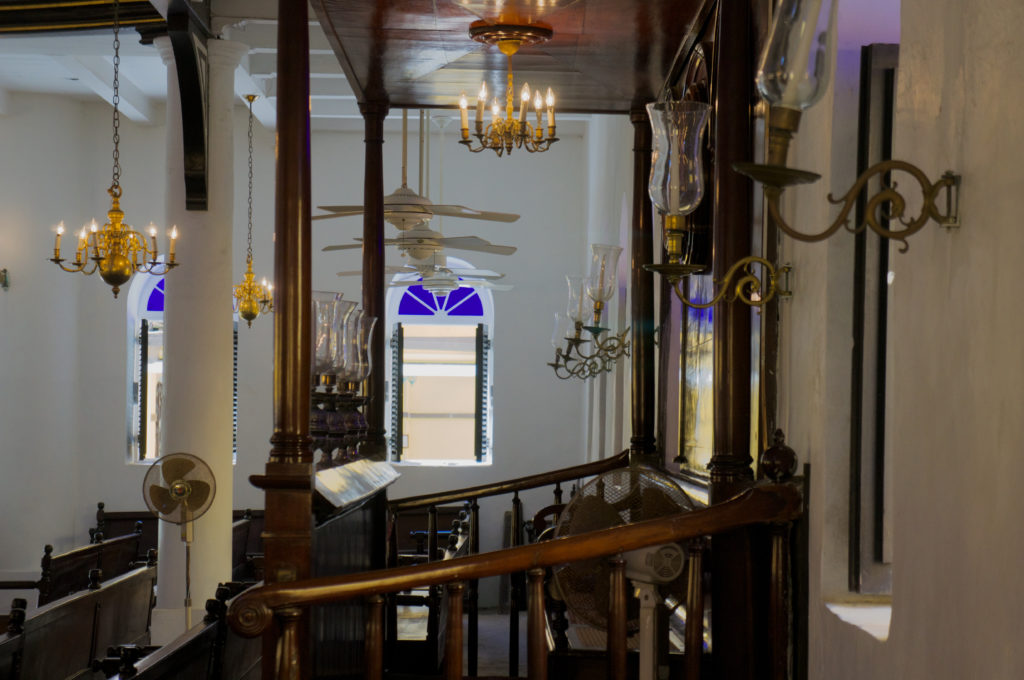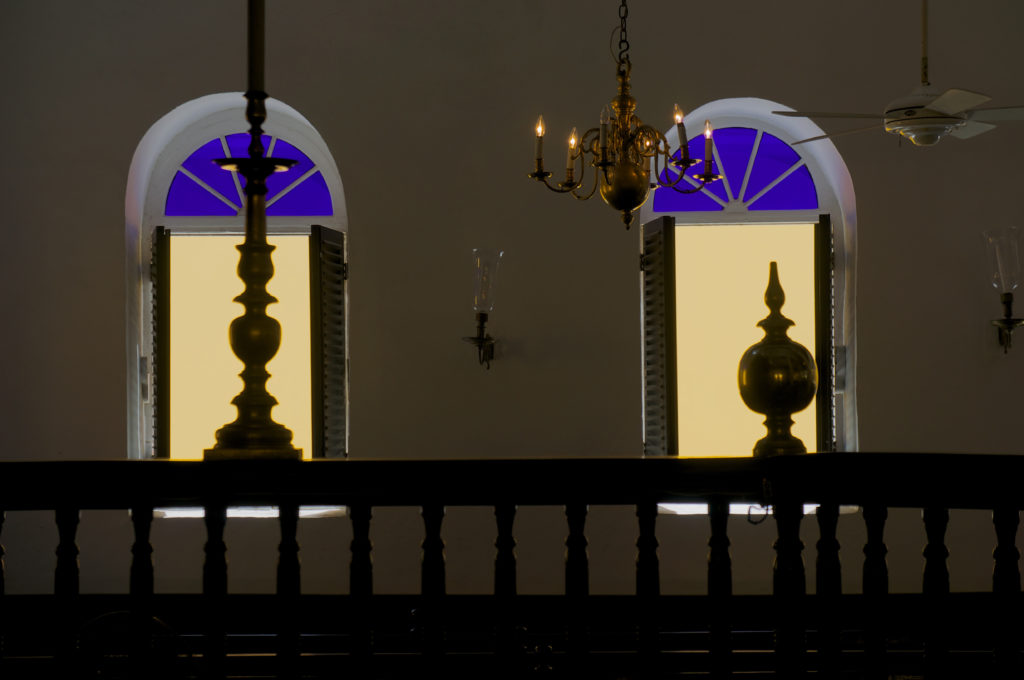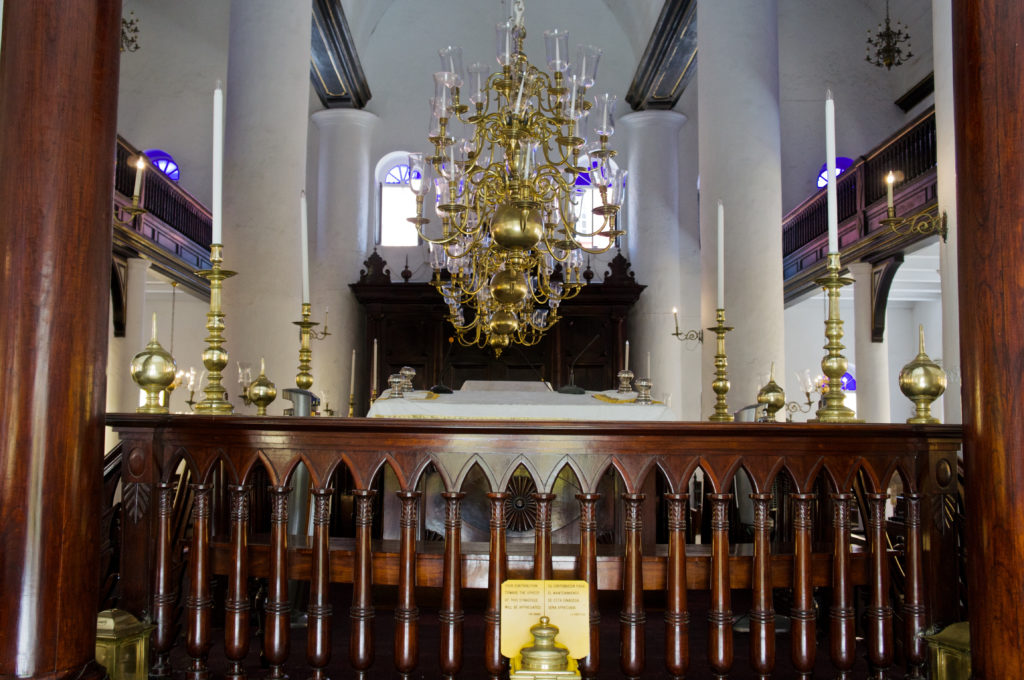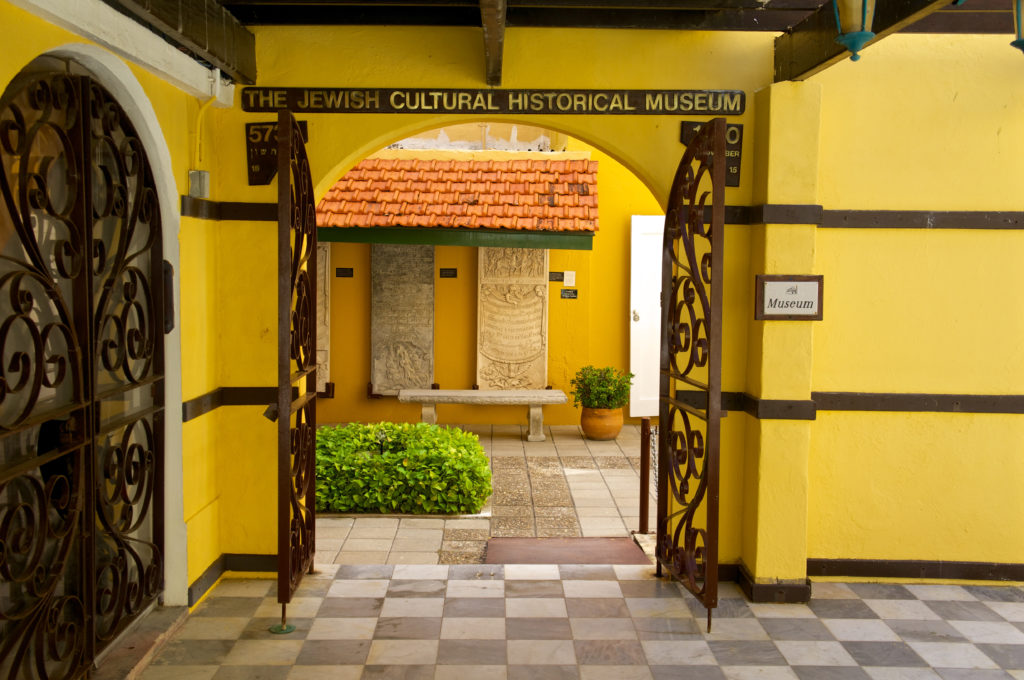At the edge of Casco Viejo, the oldest part of Panama City, stands a series of murals depicting the struggles of Panama’s indigenous peoples. I’ve photographed them individually to make them easier to show and comment on. I’m not well-versed in Panamanian history, but this is what I’ve been able to figure out.
The first panel is a prelapsarian ode to the Guna people. Most Guna live in the southeastern part of Panama that connects to South America; some also live on the islands nearby. The colors used in this panel are very similar to the reds, pinks, greens, and oranges still used today in traditional Guna clothing. The inscription on the jewel-like, heart-like shape to the right of the person’s head translates as “Listen to the sound of the heart.” As Wikipedia notes, singing and listening to songs are a fundamental part of the Guna social and political culture:
In Guna Yala, each community has its own political organization, led by a saila (pronounced “sigh-lah”). The saila is traditionally both the political and spiritual leader of the community; he memorizes songs which relate the sacred history of the people, and in turn transmits them to the people. Decisions are made in meetings held in the Onmaked Nega, or Ibeorgun Nega (Congress House or Casa de Congreso), a structure which likewise serves both political and spiritual purposes. It is in the Onmaked Nega that the saila sings the history, legends and laws of the Guna, as well as administering the day-to-day political and social affairs. The saila is usually accompanied by one or more voceros who function as interpreters and counselors for the saila. Because the songs and oral history of the Guna are in a higher linguistic register with specialized vocabulary, the saila’s recitation will frequently be followed by an explanation and interpretation from one of the voceros in everyday Guna language.
Next comes a triptych of Guna leaders headlined by text that translates as “1925 – 2015. 90 years of Dule Revolution.” The word “Dule” means people in the Guna language. The Dule Revolution, also known as the Guna Revolution, has been described this way:
In the 1920s, two decades after Panama had separated from Colombia, the new republic had established the objective of integrating the Guna population to the “national life”. To do this, the capital employed tactics that were used to divide indigenous communities and undermine the authority of their leaders. Given this situation, in February 1925, several Gunayala communities rose against the Colonial Police in what has gone down in history as the Guna Revolution. Shortly after, a peace agreement was signed by which the government compromised to respect the customs and traditions of the gunas, while the rebels agreed to accept Panama’s sovereignty and respect indigenous people who decided to adopt Panamanian customs. The Guna people’s resistance to acculturation and external submission has allowed them to reach the 21st century as one of the indigenous territories in the world with more autonomy.
The man on the left, Olonibiginya, and the man on the right, Nele Kantule, were leaders of the Dule Revolution. I have not been able to identify the middle figure. “Ologindibibbi” brings nothing up in the search engines I’ve tried; presumably he, too, is a Guna revolutionary.
The following panel, I think, depicts Guna life in an idealized state after 1925. The swastika flag, which appears at the bottom left, was adopted by the Guna nation after the Guna revolution. The swastika, which has nothing to do with Nazis, is an indigenous Amerindian symbol that represents the four sides of the world from which peoples of the earth came. The multicolored fabrics to the old woman’s right are molas with colorful geometric designs produced by a reverse appliqué process. Guna women still make, wear, and sell clothing made from these fabrics; I see them on the streets of Panama City every day. The man on the left is wearing the same kind of hat that the Guna leaders in the previous panel wear.
The fourth panel commemorates the execution of Victoriano Lorenzo, one of the big names in Panamanian history. During the struggles for Panamanian independence, he fought for the rights of indigenous people. When his party, the Liberals, was defeated in the war for independence and signed a peace treaty with the opposition, Lorenzo refused to lay down his arms. He took to the countryside to continue a guerrilla insurgency. He was eventually trapped and executed by the government, just seven months before Panama broke free from Columbian control. The Wikipedia article about him notes that “[m]any indigenous people in Panama understand his assassination as the defeat of their autonomous land rights and access to representation in the Panamanian state structure.” The text here translates as “Victoriano Lorenzo, why did they shoot him? Because he was a real Panamanian!”
The next panel continues to answer the question. It says, “Because he organized the Panamanian people and struggled at their side in the face of injustice. He fought beside the Liberals and they betrayed him.”
The last panel shows a portrait of Victoriano Lorenzo on the left, drawn closely from an oft-reproduced photo. The text on the right side reads, “We continue. The fight is fighting!” This last is a Panamanian idiom similar to saying “We have to keep up the fight!”

(Thank you to my son, Spencer Trumm, and the desk clerk staff at the Novotel Panama City for helping me translate and understand these murals.)
